Mindi K. Counts's Blog
February 26, 2024
Comprehensive Guide to Acupuncture for Sciatica
Are you suffering from sciatica? Sciatica is a type of pain that radiates along the path of the sciatic nerve. The pain runs from the lower back through the buttocks and down to one leg. The severity of pain can vary from a mild ache to a sharp, burning sensation.
In the quest for relief, many individuals are turning to alternative treatments to mitigate their discomfort. Among those is acupuncture which stands out as a promising option. This ancient Chinese medicine technique involves the insertion of thin needles into specific points on the body. It is believed to stimulate the nervous system and influence the flow of vital energy or Qi. Thus, it promotes healing and pain relief.
In this article, we’ll unravel the intricate connection between acupuncture and sciatic pain relief. Keep reading to gain insights into the acupuncture process, understand the key points targeted, and discover the potential benefits. Whether you’re seeking complementary therapy or expanding your knowledge of holistic approaches, this guide provides a concise overview of how acupuncture fits into a comprehensive strategy for alleviating sciatica symptoms.
What is Sciatica?As mentioned above, sciatica is a type of chronic pain that runs from the lower back down to the leg. Typically, sciatica affects only one side of your body, often manifesting as significant leg pain. Contrary to what most people think, this is not a medical condition. Rather, it is a symptom of an underlying problem often related to compression or irritation of the sciatic nerve.
Usually, it happens when a disk in the spine bulges or a bone spur grows. It can also occur if the spine narrows and presses on the nerve. This compression causes inflammation, sciatic pain, and often some numbness in the affected leg.
Sciatic pain from sciatica is often intense. Yet, it usually gets better in a few weeks with simple treatments. Among those is acupuncture therapy. But, people with very bad sciatica, leg weakness, or problems with their bowel or bladder might need surgery.
What Are The Causes of Sciatica?
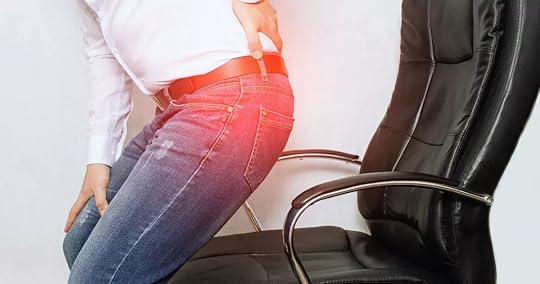
Acute or chronic sciatica stems from issues like lumbar disc herniation or intervertebral disc problems. In a nutshell, it is primarily due to a pinched sciatic nerve. Often, this pinch comes from herniated discs where the disc’s core protrudes and presses against the sciatic nerve roots. Lumbar spinal stenosis is another cause. Due to aging, the spinal canal in the lower back becomes narrow which tightens around the nerve roots.
Another culprit is spondylolisthesis. It occurs when one vertebra slips over another. This disturbs the spine’s alignment and pinches the sciatic nerve. Although less frequent, the piriformis syndrome can also happen. The piriformis muscle in the buttocks clenches the nerve and causes spasms. This can potentially irritate or pinch the sciatic nerve.
Traumatic events, such as accidents, falls, or sports injuries can lead to sciatic nerve compression as well. While less common, tumors within the spine may exert pressure on the sciatic nerve roots. In rare instances, infections in the lower spine can impact the nerve. This triggers sciatica symptoms like pain, numbness, and mobility issues. Each condition demands a tailored examination and specific treatment to alleviate nerve pressure and the accompanying symptoms. Acupuncture, for instance, has shown promise in clinical trials when it comes to managing nerve pain. It was found that it plays a significant role as a treatment for sciatica. The therapeutic effects of acupuncture offer notable relief for its symptoms
Additionally, osteoarthritis can lead to the formation of bone spurs that press on the sciatic nerve roots and cause degenerative changes. During pregnancy, the increased weight and pressure on the spine can compress the sciatic nerve. This can also lead to the development of sciatica.
Understanding the specific cause is crucial for the treatment of sciatica. Each underlying issue requires a tailored approach to alleviate the symptoms and address the root of the problem. Non-surgical interventions such as physical therapy, medications, and exercises can facilitate the healing process. These can also improve quality of life.
How Does Acupuncture Help Sciatica?Acupuncture provides a compelling approach to managing sciatica. It blends traditional techniques with a modern understanding of neurology and pain management. This method focuses on the strategic placement of needles to stimulate points along the body’s meridians. It restores energy flow and balance which, in traditional Chinese medicine, is believed to be disrupted in states of illness or pain.
In the context of sciatica, acupuncture targets areas that correlate with the underlying causes of nerve irritation and inflammation. The idea is that stimulating these points can enhance blood circulation and reduce muscle tension. Hence, triggering the release of endorphins and other natural painkillers in the body. These biochemical changes may help in reducing the perception of pain. They improve pain control and potentially aid in the healing process of the affected nerve pathways.
Research into the efficacy of acupuncture suggests that it can significantly impact pain relief in sciatica cases. Many patients have experienced a decrease in pain intensity scores and showed improvement in quality of life. This is particularly relevant for those seeking a conservative treatment option. Acupuncture presents a lower considerable risk of adverse effects compared to surgical interventions or long-term medication use.
Moreover, the safety of acupuncture for the patients is notable when performed by trained professionals. The risk of complications like hypodermal bleeding or stomach ache is minimal. This makes it a viable option for individuals looking for a less invasive therapy for sciatica. It’s also worth noting that acupuncture can complement other treatments by enhancing pain threshold, limb function, and overall motor function without interfering with conventional medical therapies.
For those considering this method, it’s essential to view it as a series of acupuncture treatment sessions rather than a one-off solution. The treatment of acupuncture points requires consistency. Also, a personalized approach during acupuncture sessions ensures that the treatment method is aligned with the patient’s needs. This maximizes the potential for pain relief and functional improvement.
Overall, acupuncture offers a promising avenue for the treatment of sciatica. This is particularly beneficial for those affected by conditions like lumbar disc herniation. Its approach to enhancing the body’s natural healing capabilities and managing pain makes it a valuable component of a holistic treatment plan.
What Are The Benefits of Acupuncture for Sciatica?
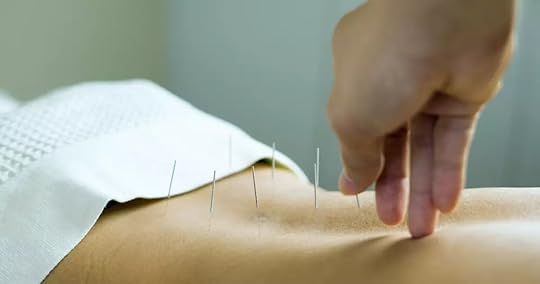
Acupuncture offers a multifaceted approach to the treatment of sciatica. This treatment method is recognized for its efficacy in pain management, anti-inflammatory effects, and mobility enhancement. It alleviates the immediate symptoms while ensuring the safety of acupuncture with minimal considerable risk.
For those on the path to recovery, acupuncture stands as a testament to the power of integrating traditional wisdom with contemporary therapeutic practices. This offers a holistic and effective route for patients with sciatica.
Pain ReductionThe cornerstone of acupuncture’s benefit for sciatica lies in its profound pain reduction capabilities. By strategically inserting needles at specific acupuncture points, it taps into the body’s meridian system. Then, it stimulates the release of natural painkillers like endorphins and serotonin. This mechanism not only lowers the pain intensity score but also helps recalibrate the body’s pain threshold offering deep, sustained pain relief. This treatment also addresses nerve pain.
Decreased InflammationBeyond mere pain alleviation, acupuncture shines in its ability to quell inflammation. The precise placement of needles works to promote better circulation and reduce the inflammatory markers in the body. This is particularly beneficial for conditions like intervertebral disc herniation or lumbar disc issues that often underlie sciatica. By mitigating inflammation, acupuncture not only eases the physical signs of discomfort. It also sets the stage for more effective healing. This makes it a preferred conservative treatment for many seeking a solution with minimal adverse effects.
Improved MobilityEnhanced mobility is another key advantage that acupuncture brings to the table for patients with sciatica. The relief from pain and reduction in inflammation naturally lead to greater flexibility and range of motion. This improvement in limb function and motor function is crucial for regaining the ability to perform daily activities without the shadow of discomfort. This holistic improvement is among the efficacies of acupuncture which can be added to the comprehensive therapy for sciatica. Those seeking a return to normalcy and an active lifestyle after a prolonged period of sciatic pain will benefit from this.
What to Expect from Acupuncture for Sciatica?If you’re thinking about using acupuncture to relieve sciatica pain, it’s good to know what to expect. This can make you feel more at ease and ready for the treatment. Here’s a breakdown of what you might experience.
Initial ConsultationDuring the initial consultation for sciatica, the healthcare provider reviews the patient’s medical history. He/she will take a look at the current symptoms and conduct a physical examination to assess nerve function and mobility. This session is essential. It helps in understanding the patient’s condition and determining why their sciatic nerve is irritated. After the evaluation, the provider might recommend more tests. He/she will make a treatment plan just for the patient.
During Acupuncture Treatment SessionsDuring acupuncture sessions, patients experience a calm and healing atmosphere that promotes relaxation. The acupuncturist starts by inserting thin, clean needles into certain points on the body called acupuncture points. These points are connected to the health problem that a patient may be experiencing like sciatica pain. Inserting the needles is usually gentle. Patients may feel slight discomfort similar to prick. They may also feel tingling or dull ache at the needle sites. This is often seen as a sign that the treatment is working.
After placing the needles, the retention time of the needles is usually ranging from 20 to 30 minutes. During this time frame, patients become very relaxed or even fall asleep. The acupuncturist might adjust the needles by twirling or gently pulsing them to enhance the therapeutic effect. The session aims to rebalance the body’s energy, reduce pain, and help natural healing. The experience is meant to be calming and refreshing.
After The SessionsAfter acupuncture for sciatica, patients usually feel better right away. However, each person’s reaction to the treatment can differ. Some people might feel less sciatic pain and move better right away. Others might get better slowly over several sessions. After a treatment, it’s normal to feel relaxed or a bit tired because your body’s natural healing starts. Minor side effects can happen as well. Common examples are small bruises and soreness where the needle went in. But there’s nothing to worry about as these usually go away fast.
Additional ConsiderationsWhen addressing sciatica, several additional considerations are crucial for effective management and recovery. Lifestyle factors play a significant role. It is essential to maintain a healthy weight to reduce pressure on the spine. It is also best to adopt ergonomic practices to minimize strain during daily activities. Engaging in regular, low-impact exercise to strengthen the back and core muscles can also enhance spiral support.
Nutritional aspects should not be overlooked as well. Make sure to have a balanced diet rich in anti-inflammatory foods that can aid in reducing nerve inflammation. Mental health is also a key component. Stress management techniques such as meditation, yoga, or mindfulness are beneficial in alleviating stress-induced muscle tension that can exacerbate sciatic pain.
Lastly, exploring complementary therapies like chiropractic care under the guidance of healthcare professionals can offer additional relief. This can support the overall body’s natural healing process. These holistic approaches, coupled with conventional medical treatments, provide a comprehensive strategy for managing sciatica.
How Long Does Acupuncture Treatment Take for Sciatica?

Acupuncture sessions typically last between 20 to 60 minutes. The duration can vary based on the acupuncturist’s approach, the complexity of your condition, and your treatment plan. The initial session may be longer due to the need for a comprehensive assessment of your health history and specific needs related to your sciatica pain. Subsequent sessions may be shorter. Acupuncturists will focus on applying acupuncture needles and other therapeutic techniques during this session.
How Many Acupuncture Sessions Are Typically Required for Sciatica?The number of acupuncture sessions required to treat sciatica relief can vary due to several factors. Usually, these include the severity and duration of your sciatica symptoms, your overall health, and how your body responds to acupuncture. Acute sciatica pain might require fewer sessions. In terms of pain intensity, those with chronic conditions will be required to undergo a more extended series of treatments. Here’s the breakdown of the number of sessions your acupuncturist might require.
Initial Phase. For many individuals, an initial course of treatment might consist of 6 to 12 sessions. These sessions may occur 1 to 2 times per week. This duration allows the practitioner to assess the effectiveness of the treatment and make any necessary adjustments if needed. Assessment and Adjustment. After the initial phase, your acupuncturist will evaluate your progress to determine the need for further sessions. Some people may experience significant improvement within the first few sessions. While others might need a longer duration to achieve noticeable benefits.Long-Term Management. Once the initial symptoms are addressed, some individuals may benefit from periodic maintenance sessions to manage pain and prevent recurrence. This could mean scheduling sessions monthly or at another interval recommended by your acupuncturist.Personalized Treatment Plans. Acupuncture treatments are highly individualized. Your practitioner will tailor the number and frequency of sessions to your specific needs. He/she will adjust the treatment plan as your condition improves. That’s why it is essential to communicate openly with your acupuncturist about your progress. Share the concerns you have throughout the treatment process. This will help ensure the treatment plan is optimized for your unique situation.How Much Does Acupuncture for Sciatica Typically Cost?The cost of acupuncture sessions varies due to some factors. Those include the practitioner’s expertise, session length, and location. Typically, the rates range from $75 to $150. We encourage you to explore insurance options. Some health insurance plans may cover acupuncture, especially if it’s recommended as part of a larger treatment plan for conditions like sciatica. Inquire with your insurance provider to understand what is covered under your plan.
Also, many acupuncturists offer package deals if you purchase multiple sessions upfront. Make sure to inquire to reduce the overall cost per session. Some clinics offer community acupuncture. Here, treatments are performed in a group setting at a lower cost. This can be a more affordable option. The sessions typically range from $20 to $50 only.
What Are The Side Effects of Acupuncture for Sciatica?

Acupuncture is widely used for a variety of conditions. It offers effective solutions for chronic pain and stress management. While many tout its benefits and consider it a safe alternative or complementary treatment, it’s essential to acknowledge that, like any medical treatment, acupuncture can have adverse effects. Here are the side effects you may experience after the treatment.
Minor Bruising or Bleeding. Some individuals might experience minor bruising or bleeding at the needle insertion sites.Soreness. Mild soreness or tenderness may occur at the sites where needles were inserted. But these usually subsides within a few hours to a few days.Fatigue. Some people may feel tired after an acupuncture session. While others may experience a boost in energy levels.Emotional Release. Acupuncture can sometimes trigger an emotional response. This is likely due to the release of pent-up emotional tension. It is generally considered a positive aspect of the healing process.Infection. There’s a low risk of infection if the needles used are not sterile. However, this is rare. Most acupuncturists use pre-packaged, single-use, sterile needles.Organ Injury. Very rarely, if a needle is inserted too deeply, it could injure an internal organ. This risk might happen if needles are placed on the torso.Nerve Damage. Improper needle placement or depth of insertion could lead to nerve pain. But this is extremely rare and only occurs when done by an unqualified practitioner.
Special Considerations
Pregnancy. Certain acupuncture points are believed to stimulate labor which could pose a risk for pregnant women. If you’re pregnant, inform your acupuncturist about your pregnancy during the initial consultation. Wrapping UpAcupuncture presents a compelling and holistic approach to managing sciatica. By blending the wisdom of ancient practices with the precision of modern holistic healthcare, this gentle yet effective therapy offers a beacon of hope. Through its remarkable ability to alleviate pain, it empowers individuals to reclaim their daily routines and engage in life’s activities with renewed vigor and less discomfort.
At Inner Ocean Center for Healing, we’re committed to guiding you through your health journey with care and expertise. If sciatica is affecting your life, consider acupuncture as a pathway to relief and recovery. Our team is here to support you. Reach out today to explore how acupuncture can enrich your journey toward a life free from sciatica pain.
The post Comprehensive Guide to Acupuncture for Sciatica first appeared on Inner Ocean Center for Healing.
February 19, 2024
Mesotherapy: A Modern Guide to Beauty and Wellness
Mesotherapy is a revolutionary cosmetic procedure that is changing beauty and wellness nowadays. It involves injecting a custom blend of vitamins, enzymes, hormones, and plant extracts into the skin’s middle layer using fine needles. Through this unique method, it rejuvenates and tightens the skin as well as dissolves fat. It also stimulates hair growth which is beneficial for those suffering from alopecia or hair loss. These mesotherapy injections harness the power of injections of vitamins and hyaluronic acid. They offer affordable treatments for skin rejuvenation and fat reduction.
In this article, we’ll discuss how this type of microneedling helps those seeking to naturally and effectively enhance their beauty. We’ll also explore its benefits and provide expert tips on how to take care of your skin post-treatment to get long-lasting and better results. So keep reading to learn all the secrets you need.
What Makes Mesotherapy Different from Other Cosmetic Procedures?
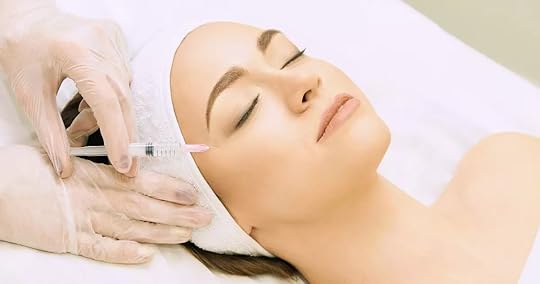
Dr. Michel Pistor created the mesotherapy treatment in 1952. Fast forward to today, and it stands out among cosmetic treatments due to its unique approach and versatility. Mesotherapy stands out for its targeted approach. It uses a precise mix of nutrients, plant extracts, and amino acids, which are injected directly where needed. This method tackles specific skin and body issues effectively, such as rejuvenation and fat layer reduction. It helps promote the body’s natural healing process, boosts collagen production and elastin production, and breaks down localized fat. Unlike many cosmetic surgeries, traditional medicine, or surgical procedures, mesotherapy is minimally invasive. The customized treatment plan aims to avoid incisions as well as reduce risks and recovery time.
Its versatility is unmatched. It can address both aesthetic concerns like wrinkles and medical conditions such as hair loss. Each treatment is tailored to cater to individual needs with a unique blend of vitamins, enzymes, and hyaluronic acid.
What’s good about it is that treatment sessions are quick and require minimal downtime. This makes mesotherapy an ideal choice for those with busy schedules seeking efficient and personalized cosmetic solutions. It is effective in remodeling scar tissue, addressing cellular damage, and improving skin quality. Plus, it fades away stretch marks and sun damage.
How Does Mesotherapy Work?Mesotherapy involves injecting a tailored blend of vitamins, enzymes, plant extracts, and amino acids directly into the mesodermal area of the skin. This targeted approach stimulates the body’s healing response, promoting the natural production of collagen and elastin to rejuvenate the skin, reduce fat, or encourage hair growth. The procedure activates the skin’s repair mechanisms and can specifically address issues like skin elasticity, firmness, cellulite reduction, and hair loss. Other effects of mesotherapy are gradual improvements in skin texture, contouring, or hair density.
What Benefits Does Mesotherapy Offer?
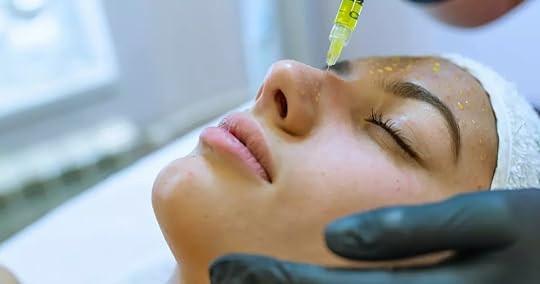
Mesotherapy offers a spectrum of benefits to the skin and body. This innovative technique offers effective solutions for various cosmetic and health-related concerns without invasive procedures. Here’s what it can do for you.
Revitalize Aging SkinMesotherapy is famous for its ability to make the skin look younger and healthier. The mix of vitamins, minerals, and antioxidants used in this treatment improve the skin tone, texture, and overall glow. This treatment is great for reducing fine lines and wrinkles and giving you a youthful glow.
Improve Skin QualityThis treatment improves your skin by targeting specific areas as well as by deeply moisturizing and nourishing it. Through a targeted approach, it enhances skin hydration, firmness, and flexibility. This results in a healthier and more vibrant skin.
Combat Hair LossMesotherapy is highly effective for treating hair loss and offers a practical solution for people with androgenetic alopecia. Through injection therapy, it efficiently supplies vital nutrients to the hair follicles and stimulates regrowth.
Treat Stretch Marks and ScarsMesotherapy is a great way to reduce the visibility of scars and stretch marks. It repairs damaged skin tissue and improves skin elasticity. This leads to a smoother and more even complexion.
Body Sculpting and Cellulite ReductionMesotherapy targets specific body areas to enhance body contouring. It gives you a more toned body by reducing fat cells in specific areas like the abdomen, thighs, and buttocks. This is helpful in improving lymphatic drainage, reducing fat layers, and addressing cellulite.
Who Are The Ideal Candidates for Mesotherapy?Determining who can benefit most from mesotherapy is key to achieving the desired outcomes. Here, we listed the ideal candidates for this treatment.
Individuals Seeking Non-Surgical Cosmetic SolutionsThose who prefer minimally invasive procedures over traditional cosmetic surgeries will find mesotherapy appealing. It’s a suitable choice for people wary of the risks and downtime associated with surgical options.
People with Specific Skin ConditionsMesotherapy works well for individuals looking to address particular skin issues such as wrinkles, loose skin, pigmentation, and a lack of skin elasticity. The treatment’s ability to infuse the skin with vitamins and hyaluronic acid makes it effective for skin rejuvenation.
Those Experiencing Hair LossIndividuals struggling with hair thinning or loss, including conditions like androgenetic alopecia, can benefit from mesotherapy. The treatment’s targeted approach can stimulate hair follicles and promote hair regrowth.
People Looking for Body ContouringIf you’re aiming to reduce localized fat deposits or cellulite, mesotherapy can be an effective treatment. It’s particularly beneficial for those who have struggled with too much fat in specific areas but cannot lose weight through diet and exercise.
Candidates with Good Overall HealthAs with any cosmetic treatment, good general health is crucial. Those without serious health issues are ideal candidates. If you have skin infections or blood coagulation disorders, be sure to consult your doctor first before getting this treatment. Also, tell your practitioner if you are allergic to plant extracts, amino acids, or vitamins.
How Much Does Mesotherapy Cost and How Effective Is It?

It is important to grasp the cost and effectiveness of mesotherapy. Prices can differ based on where you are, how experienced the practitioner is, the area being treated, and specific concerns such as hair loss or skin rejuvenation. Usually, a session costs between $250 and $600. Urban or upscale clinics may charge higher. The total cost depends on the number of sessions needed. Some people see results after a few treatments. While others require more sessions for issues such as hair loss or significant cellulite reduction.
As mentioned above, mesotherapy is highly effective in rejuvenating the skin than other non-invasive options. Its targeted approach directly treats the problem area and delivers therapeutic substances.
People who underwent this treatment have improved their skin’s texture and hydration. Fine lines are significantly reduced as well. Also, it is effective in stimulating hair growth and reducing hair loss. However, it is best to remember that results can vary, especially for fat and cellulite. Some factors to consider are your body type and lifestyle.
Most importantly, consulting a qualified practitioner is crucial to gauging specific costs and expected results. Licensed and experienced practitioners can create a tailored plan for your personal goals and conditions.
What Happens During A Mesotherapy Session?Are you getting mesotherapy soon? Knowing what to expect during the entire treatment can help you prepare for the treatment and have realistic expectations. Here’s a simple breakdown of what happens during a mesotherapy session.
Initial ConsultationThe session usually begins with an assessment of your skin or hair condition. The practitioner will ask about your medical history, current health status, and treatment goals. Based on the assessment, he/she will develop a customized treatment plan for you. This may involve choosing a specific cocktail of vitamins, plant extracts, amino acids, and other agents tailored to your needs.
Preparation PhaseBefore the actual treatment officially begins, the practitioner will clean and disinfect the targeted area. If needed, a numbing cream can be applied to reduce any discomfort from the injections
Mesotherapy ProcessThen, the practitioner uses fine needles or micro needles to administer superficial injections into the middle layer of your skin. The number and depth of injections vary based on the treatment area and condition being addressed. Expect your treatment to last between 30 and 60 minutes, depending on the size of the area being treated.
Post-Treatment ExpectationsAfter the session, you might notice redness, swelling, or bruising at the injection sites. These symptoms are common and usually go away in a few hours or days. Before you leave, your practitioner will give you personalized aftercare instructions. These may involve staying out of the sun and using specific skincare products to help with healing. If necessary, he/she might advise you to have another session to get the best result. The number needed can vary based on your goals. If advised, make sure to keep up with your maintenance sessions. This is important for maintaining the benefits of mesotherapy, especially in the improvement of hair growth and skin quality.
What Are The Common Side Effects and Risks of Mesotherapy?If you are considering mesotherapy, it’s important to be aware of the potential side effects and risks associated with the procedure. While it is generally safe, understanding these aspects can help you make an informed decision.
Mild Swelling and Redness. These are the most common side effects, which are similar to mild sunburn. Don’t worry too much, as these typically subside within a few hours or days.Bruising. Some individuals may experience bruising. This is natural due to injection. Don’t panic, because it will heal on its own. Itching and Soreness. The treated area might feel itchy or sore for a short period post-treatment.Allergic Reactions. Rarely, individuals might have an allergic reaction to the substances used in the injections.Pigmentation Changes. There’s a slight risk of skin pigmentation changes, particularly for darker skin types.Infection. Though it’s rare, there’s a risk of infection. This happens if the treatment area and devices are not properly cleaned.Nodule Formation. Small nodules or lumps may form under the skin. But these will go away over time.Remember, the experience and skill of practitioners play a crucial role in minimizing risks. They can provide personalized advice based on your specific condition and treatment goals. Plus, the safety and purity of the substances injected can significantly impact the likelihood of side effects. But do note that every person’s skin reacts differently. Some might be more prone to certain side effects than others.
So, it’s important to monitor the treated area. Make sure to follow the post-treatment care instructions provided by your practitioner. If there are unusual or prolonged side effects, immediately consult your practitioner to avoid further risks.
How Should You Care for Your Skin and Hair After Mesotherapy?Post-treatment care is crucial for maximizing the benefits of mesotherapy and ensuring a smooth recovery, which will keep the skin clean and protected, support the healing process, and maintain the skin’s natural barrier to optimize skin texture and health. Here are key guidelines for skin and hair care after undergoing mesotherapy.
Keep the treated area protected from direct sunlight for a few days post-treatment to prevent irritation.Use mild, non-irritating skincare products. Avoid exfoliating agents and retinoids until your skin recovers.Keep your skin well-hydrated with gentle, fragrance-free moisturizers.Don’t apply makeup for at least 24 hours to allow your skin to breathe and heal.For hair, opt for gentle shampoos. Avoid chemical treatments like coloring or perming for a few days.Minimize heat styling and tight hairstyles to reduce stress on the scalp and hair follicles.Avoid heavy workouts for a couple of days, as sweating might irritate the treated area.Stay away from chlorinated water and saunas to prevent infection and irritation.Support your treatment with a healthy diet rich in vitamins and antioxidants and stay well-hydrated.Continue with a regular, gentle care routine to maintain the health of your skin and hair.Attend any recommended follow-up sessions to achieve the best results.But bear in mind that each individual’s response to mesotherapy can vary. So it’s essential to follow the specific aftercare instructions provided by your practitioner.
Wrapping UpMesotherapy offers a diverse range of benefits. It showcases the advancements in modern dermatology with solutions for skin rejuvenation, fat reduction, and hair restoration. At the Inner Ocean Center for Healing, we deeply value the transformative impact of mesotherapy. We prioritize tailoring our services to meet your unique needs to ensure you benefit from the latest art technology in cosmetic dermatology, achieving attractive skin, and effectively addressing cosmetic conditions. Our holistic approach to microneedling maximizes the treatment’s benefits. We offer ongoing support and care that fosters a community committed to beauty, health, and well-being. Contact us today and let us guide you on your journey toward enhanced beauty and wellness.
The post Mesotherapy: A Modern Guide to Beauty and Wellness first appeared on Inner Ocean Center for Healing.
February 12, 2024
Dry Needling vs. Acupuncture: Which Is Best For You?
Dry needling and acupuncture are two popular options for pain relief and holistic healing. Knowing the differences can help you decide which type of treatment is right for you. While both involve fine needles, they have distinct approaches and benefits. Dry needling targets specific muscle trigger points to alleviate pain and improve mobility. On the other hand, acupuncture is deeply rooted in Traditional Chinese medicine. It focuses on balancing the body’s energy flow or Qi.
This article will delve into the nuances of dry needling vs. acupuncture. We’ll share key points to help you make an informed decision for your well-being. Read on to discover which therapy may be the right fit for you.
What is Dry Needling?
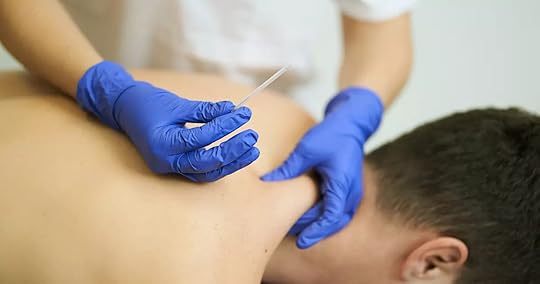
Dry needling is a modern treatment technique that uses a thin filament needle to target and treat muscular pain, tendons, and nerves. It helps relax muscles and makes movement easier. It is effective for treating chronic pain and other painful conditions such as plantar fasciitis, headaches, back pain, sciatica, and muscle strains.
The process involved can vary depending on the individual and their specific condition. But for most cases, practitioners often use a sterile needle when treating patients. They put the needle into tight muscle spots to get a twitch response. This twitch response helps release muscle tension and promote healing.
What Are The Different Dry Needling Techniques?Dry needling is a technique utilized by healthcare professionals, including physical therapists, to treat musculoskeletal conditions. This treatment uses thin, clean needles just like those in acupuncture. The primary goal of dry needling is to relieve muscle tension, treat chronic pain, and improve a wide range of motion. Here, we explore various techniques used in this treatment and their intended effects.
Intramuscular StimulationIntramuscular stimulation or IMS is commonly used to treat conditions such as myofascial pain syndrome, chronic muscle strain, and fibromyalgia pain. It targets myofascial trigger points that are causing pain and muscular issues. The needle is inserted into the trigger point to elicit a twitch response from the muscle. This is to release muscle shortening, alleviate pain, and restore function. The twitch response is a sign that the tight muscle fibers are relaxing.
Superficial Dry NeedlingThis technique is often used for sensitive areas. It involves putting needles under the skin but not deep into the muscles. It targets trigger points and specific areas around superficial nerves to treat musculoskeletal issues. This increases the proper flow of blood, reduces localized inflammation, and promotes healing. It is helpful for new patients because they may be more sensitive to deeper needle penetration.
Deep Tissue Dry NeedlingIn this technique, needles are inserted more profoundly into the muscle tissue. It targets deeper layers of muscle to reach deeper-seated trigger points that superficial needling cannot address. This is an effective technique for releasing tension in larger or deeper muscles. It helps with deep muscle problems like those in the buttocks, hip flexors, or deep back muscles.
Pistoning or Pecking TechniqueThe in-and-out technique, also known as pistoning, is a method in which the needle is inserted directly into the trigger point (without entirely removing it). This is to stimulate a larger area within the trigger point and elicit multiple twitch responses. This technique gives a therapeutic effect on stubborn trigger points that do not quickly release with a single needle insertion.
Non-trigger Point TechniqueThe needles are inserted into the areas surrounding the myofascial trigger points. It helps reduce muscle tension and pain in the surrounding tissue and potentially leads to an indirect release of the trigger point. It is ideal for areas with diffuse pain or when direct needling of a trigger point is too painful. The non-trigger points technique is designed to treat the central nervous system, as it operates under the notion that pain is caused by underlying nerve or muscular problems.
Electro Dry NeedlingA gentle electrical current is passed through the needles after insertion into the trigger points. It stimulates the muscle constantly which helps relax it and relieve pain. This is often used for more chronic conditions or when traditional dry needling has not achieved the desired effect. In certain instances, electrical stimulation may be used on the needles to enhance the pain-relieving effects of the treatment.
What is Acupuncture?

Acupuncture treatment originated in Traditional Chinese Medicine. It involves the insertion of thin acupuncture needles into specific points on the body to stimulate its natural healing process. This practice believes that channels called meridians exist throughout the body and connect acupuncture points. These pathways allow the energy (also known as Qi) to flow freely and smoothly within the body. This technique can be used for a variety of medical conditions. It doesn’t just treat symptoms or one area of pain. Instead, it offers holistic treatment. It aims to improve overall health by improving blood flow, reducing swelling, and making you feel better.
Here are the benefits of acupuncture:
Pain Relief. It is well-known for easing different types of pain. Especially chronic ones. This is effective in addressing musculoskeletal pain, and chronic back, neck, and knee pains caused by osteoarthritis.Stress and Anxiety Reduction. Acupuncture helps reduce stress and anxiety . It regulates the body’s stress responses and promotes relaxation. Patients often feel more energetic and happier after acupuncture.Improved Sleep. Acupuncture therapy can help treat insomnia and improve overall sleep quality. The trigger points influence the body’s neurotransmitters related to relaxation and sleep.Enhanced Digestive Function: Acupuncture stimulates specific body points to regulate digestive function, enhancing gut health. This practice can balance the energy pathways, reducing symptoms like bloating and indigestion.Headache and Migraine Relief. Acupuncture targets certain points in the body to enhance energy pathways. This can lessen headaches and migraines by easing stress and promoting calm. It may also boost natural pain relief and improve blood circulation, helping to reduce these conditions.Immune System Boost: Acupuncture can boost your immune system. It stimulates your body’s natural defenses. Thus, you can fight illnesses and infections. Aside from that, it also improves blood circulation.Alleviation of Chemotherapy Side Effects. Acupuncture can ease chemotherapy side effects. It helps with issues like nausea and vomiting. This is beneficial for improving quality of life, especially for people with cancer.Reduction of Eye Strain. Acupuncture can help reduce eye strain. It can also treat eye conditions such as myopia (short-sightedness) and hypermetropia (long-sightedness).Fertility Enhancement. Acupuncture can help fertility by boosting blood flow to reproductive organs and making them work better. It can also help balance hormones, reducing stress that can affect fertility.Menstrual and Menopause Symptom Relief. Acupuncture can ease menstrual cramps by controlling hormones and lessening pain and discomfort. For menopause, it can assist with issues like feeling hot and moody by balancing hormones and promoting relaxation.Dry Needling and Acupuncture: What’s The Difference?Dry needling and acupuncture are often confused as similar practices due to their shared use for therapeutic purposes. People often mix them up because both use needles. However, they are different in their history, theory, techniques, and goals.
Historical OriginsAcupuncture is an ancient technique and form of medicine that is part of Traditional Chinese medicine (TCM). The practice has been used for thousands of years following the Chinese philosophy and medicine.
Dry needling is a modern technique developed in the 20th century. It is based on Western medicine and neurophysiological principles. This method is similar to acupuncture and can assist in reducing pain and improving recovery in physical therapy and sports medicine.
Theoretical FoundationsIn acupuncture, the concept of Qi or life energy flows through the body via meridians. By inserting needles on acupuncture points, it aims to balance the flow of Qi in the body to restore health and prevent disease.
On the other hand, dry needling does not adhere to the concept of Qi or meridians. Instead, it aims to reduce muscle pain and improve function by targeting tight knots in muscles called “myofascial trigger points”. These knots can cause discomfort in a larger area.
Techniques and ApplicationAcupuncture is a treatment where needles are placed at specific points on the body to restore energy balance. These points may not be near the pain. Licensed acupuncturists choose the area where there is an imbalance in the body.
For dry needling, it uses needles to relieve muscle tension and neck pain. Practitioners find the muscle trigger points through touching and certain tests. Then, they insert needles to make the muscles twitch and relax.
Therapeutic GoalsDry needling and acupuncture differ in their therapeutic goals. Dry needling primarily focuses on relieving muscular tension, knots, and trigger points to alleviate pain and improve muscle function.
In contrast, acupuncture is rooted in Traditional Chinese medicine. It aims to balance the body’s flow of energy, known as qi, to address a wide range of health issues beyond just musculoskeletal problems, including emotional well-being and internal organ function.
Expert acupuncturists receive extensive training in Traditional Chinese medicine. They need a license to practice it. Their education includes good medicine acupuncture, dietary therapy, and other aspects of TCM.
Dry needling is practiced by physical therapists, chiropractors, and some medical doctors. They receive advanced training for this technique as part of their medical or physical therapy education.
Dry needling and acupuncture involve the insertion of thin needles. Dry needling primarily targets muscular trigger points to alleviate pain and improve muscle function. On the other hand, acupuncture offers a holistic approach that considers the body’s energy flow and aims to promote overall well-being. With its long history of effectiveness in treating various conditions, acupuncture offers benefits beyond just pain relief, such as stress reduction, improved sleep, and enhanced immune function.
For those seeking the comprehensive benefits of acupuncture, Inner Ocean Center of Healing provides expert care tailored to your specific needs. Take the first step towards optimal health and wellness today. Contact us to schedule your appointment and discover the healing potential of acupuncture.
The post Dry Needling vs. Acupuncture: Which Is Best For You? first appeared on Inner Ocean Center for Healing.
February 5, 2024
Complete Guide to Skin Pen Microneedling
Many find themselves at a crossroads of skincare options as they embark on a journey toward radiant skin. Among the plethora of treatments, one standout solution is skin pen microneedling. But what exactly makes it a sought-after choice for those yearning for rejuvenated skin?
Skin Pen Microneedling is a groundbreaking approach in the realm of skincare. Unlike conventional treatments, this type of microneedling is celebrated for its versatility across different skin types. An affordable treatment that revolutionizes skin rejuvenation through its natural wound healing process that can fade stubborn facial acne scars and enhance the overall skin texture.
In this article, we’ll unravel how a skin pen can help you get smoother and flawless skin. Keep reading to learn the secrets of this revolutionary skin treatment.
Skin Pen vs. Traditional MicroneedlingSkin pen and traditional microneedling are both types of microneedling. Both provide effective solutions for skin rejuvenation. They target issues such as aging signs, fine lines, acne scars, skin texture, and overall skin health. Each method offers customization to treat individual skin concerns to achieve the desired skin improvement.
However, they offer distinct treatments with different focuses and methodologies tailored to meet different skin health and aesthetic objectives. Here’s a breakdown of their key differences.
Comparison Criteria
Skin Pen MicroneedlingTraditional MicroneedlingPrimary Focus
Skin rejuvenation. It addresses fine lines, acne scars, and overall texture.Skin rejuvenation. It addresses skin texture, acne scars, and aging signs.
Procedure Type
Non-invasive. It creates micro-injuries to stimulate skin healing and offers a more targeted approach to collagen induction therapy.Minimally invasive. It uses needles to create micro-injuries, promoting natural healing.
Target Area
Skin surface, specifically the face and areas with scars or wrinkles.Used in various areas of the skin for rejuvenation and treating specific skin issues.
Typical Duration of a Session
About 30 minutes to an hour per session.Approximately 20-60 minutes per session, depending on the treated area.
Expected Results
Enhanced skin texture as well as reduced scars and wrinkles.Improves skin tone and texture as well as reduces the appearance of scars and signs of aging.
Time to See Results
Visible improvements are often seen within a few weeks.Results can be seen after a few sessions. It varies based on skin type and condition.
Duration of Effects
Lasts several months but maintenance treatments are recommended.Long-lasting effects. However, maintenance treatments may be needed for sustained results.
CostThe average cost for a session can range from $200 to $700 depending on location and treatment scope.Cost varies widely based on the treatment area and practitioner. Generally, the price ranges from $100 to $500 per session.
What Are The Benefits of Skin Pen Microneedling?Skin Pen Microneedling offers a range of transformative benefits for the skin. Here are five key advantages you’ll get to enjoy when you avail of this treatment.
Reduction of Fine Lines and WrinklesA standout benefit of skin pen microneedling is its ability to restore a more youthful skin tone. It visibly reduces fine lines, wrinkles, and age spots by stimulating collagen production. Collagen plays a critical role in maintaining skin elasticity and firmness. This natural boost helps to fill in and smooth out wrinkles. This gives you a more youthful appearance.
Enhanced Skin Texture and ToneIt can significantly improve skin texture as well. Additionally, it enhances overall skin tone. This is beneficial for those dealing with uneven pigmentation. Their complexion becomes clearer which enhances the skin’s natural beauty.
Effective Acne Scar TreatmentFor individuals struggling with the aftermath of acne, skin pen microneedling offers an effective solution for treating acne scarring or reducing acne scars. The process of creating micro-injuries on the skin triggers a natural wound healing response. It helps in the remodeling of scar tissue and diminishes the appearance of these stubborn scars even those scars for ages.
Minimized Pore Size and Improved Skin ElasticityThe treatment effectively tackles enlarged pores which are also a common skin concern. By stimulating collagen production, it boosts the overall elasticity of the skin and reduces pore size. It also effectively tightens loose skin and reduces the appearance of stretch marks. As a result, your skin becomes firmer and more toned.
Who Are The Ideal Candidates for Skin Pen Microneedling?

Generally, a skin pen is a versatile treatment suitable for a wide range of individuals. However, it’s particularly beneficial for those seeking solutions to specific skin concerns. Here’s a list of candidates who’ll benefit the most from this treatment.
Individuals with Aging Skin ConcernsAs mentioned above, this is effective in addressing fine lines and wrinkles. So if you’re seeing these signs of aging or you experience a decrease in skin elasticity, the skin pen will help you fight these.
People with Acne ScarsThe treatment promotes natural skin regeneration. That’s why it is highly recommended for those struggling with acne scarring and uneven skin texture. But it should be used with caution in areas with active acne. As the skin regenerates, it removes dead skin cells and fades the visibility of acne scars. This gives way to a more vibrant skin underneath.
Anyone Seeking Enhanced Skin Texture and ToneIf you desire smoother, more even-toned skin, this treatment can help. It’s effective for various skin types including those categorized under the Fitzpatrick skin types. It can also address issues like sun damage and hyperpigmentation.
Individuals Looking for Pore Size ReductionPeople with enlarged pores or those seeking to improve their skin’s overall texture are ideal candidates as well. Skin pen can help tighten the skin and reduce the appearance of large pores.
Those Seeking a Non-Invasive TreatmentIf you’re looking for a less aggressive non-invasive alternative to laser treatments or chemical peels, this is an excellent choice. It offers effective results with minimal downtime.
Individuals Seeking Minimal DowntimeThis is an excellent option for those who desire noticeable skin improvements without the lengthy recovery times associated with more invasive procedures. It is ideal for busy individuals or those who cannot afford extended downtime. This treatment provides the advantage of quick sessions and a relatively fast return to normal activities.
How Does Skin Pen Microneedling Work?
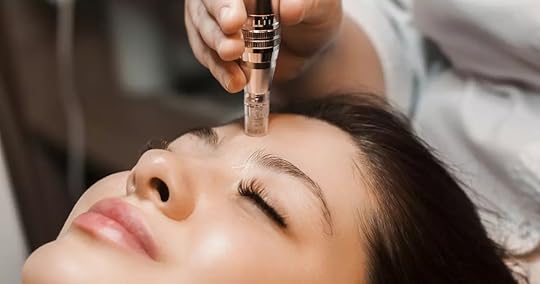
As the name suggests, skin pen microneedling uses a skin pen. This is a meticulously engineered device that creates tiny and controlled punctures or micro-injuries on the skin’s surface. These micro-injuries, although minor, are pivotal in triggering the skin’s natural repair process. Also, depending on the various skin types and concerns, the practitioner can adjust the depth and intensity of the controlled punctures. This adaptability makes it an effective solution for a wide range of skin conditions and personal aesthetic goals.
As the skin registers these micro-pricks, it instinctively initiates a healing response. This is a critical phase of the treatment. It serves as the basis for the skin’s transformation tapping into the body’s ability to heal and rejuvenate itself.
The healing process involves more than just repairing the tiny wounds. It activates the skin’s renewal mechanisms at a cellular level. This contributes to overall rejuvenation and revitalization.
The precision of the skin pen is a key element in the treatment’s effectiveness. It allows for targeted therapy that focuses on specific skin concerns. Sometimes, depending on the individual’s needs, people opt for this treatment for general skin enhancement.
What Are The Common Side Effects of Skin Pen Microneedling?While skin pen microneedling is a safe and effective treatment for various skin concerns, it’s important to be aware of the potential side effects. Here are some common reactions you might experience:
Redness and Sensitivity. After a skin pen microneedling session, it’s normal for your skin to exhibit redness which is similar to mild to moderate sunburn. This is a natural response to the micro-injuries created by the tiny needles. The skin may also feel tender or sensitive for a short period. Applying a numbing cream on your skin may provide comfort and minimize the risk of allergic reactions.Swelling. Some individuals may experience mild swelling in the treated area. This is a part of the natural healing process so there’s nothing to worry about. It usually subsides within a few days.Dryness and Flaking. As the skin rejuvenates and regenerates new cells, you might notice dryness or flaking. This is a normal part of the shedding of older skin layers. This reaction makes a way for fresher and healthier skin.Bruising. In rare cases, minor bruising can occur. This might happen for individuals with sensitive skin. But bruises should be mild and heal quickly.Temporary Changes in Skin Texture. Initially, your skin might feel rougher due to the healing process. Over time, as the skin heals and new collagen is formed, the texture improves. This leaves you with smoother and more refined skin.These side effects are typically short-lived and a natural part of the skin’s healing and rejuvenation process. When these are prolonged, immediately consult your doctor to prevent further complications.
What to Avoid After Skin Pen Treatment?

It’s important to follow the post-treatment care instructions provided by your skin pen microneedling professional. Your effort to do your aftercare will minimize side effects and maximize results. Here’s what you should avoid after the treatment for optimum results.
Sun Exposure. Protect your skin from the sun. UV rays can be particularly harmful to the newly treated skin. Make sure to avoid direct sunlight as well. When you need to go out, wear a broad-spectrum sunscreen with a high SPF.Harsh Skincare Products. Stay away from products containing retinoids, alpha hydroxy acids, beta hydroxy acids, or any other potentially irritating ingredients. Your skin will be sensitive post-treatment. These products might cause further irritation.Makeup. Avoid applying makeup for at least 24 hours after the treatment. Makeup can clog the microscopic channels created by the skin pen. Cosmetics can hinder the healing process and potentially lead to breakouts.Strenuous Activities and Exercise. Refrain from engaging in heavy physical activities for a couple of days. Excessive sweating can irritate the skin and increase the risk of swelling or other complications.Touching or Picking the Skin. Resist the temptation to touch, scratch, or pick at your skin. Bacteria might enter your skin and cause infection. When this happens, it will interfere with the natural healing process.Extreme Temperatures. Avoid saunas, steam rooms, and hot showers for a few days post-treatment. High temperatures can exacerbate redness, swelling, and irritation.Exfoliating Treatments. Stay clear of any mechanical or chemical exfoliating treatments immediately after microneedling. Your skin needs time to recover and rebuild without additional stress.Remember, proper aftercare is key to achieving the desired results. Always consult with your skincare professional for personalized advice and follow their recommendations closely.
What to Expect During a Skin Pen Treatment?Embarking on a skin pen microneedling session can be a transformative experience for your skin. Here’s what to anticipate before, during, and after the treatment process:
Initial ConsultationInitially, a professional will evaluate your skin type and concerns. This is a necessary process to check if skin pen microneedling is appropriate for you. It is crucial, especially for individuals with specific skin conditions or sensitivities.
Preparation PhaseBefore the treatment starts, your practitioner will thoroughly clean your skin to remove any makeup, dirt, or oil. A clean surface is vital for an effective and safe microneedling session. To minimize discomfort, a numbing cream will be applied. This ensures a more comfortable experience, particularly for those with lower pain thresholds during the treatment process.
Microneedling ProcessThe practitioner will use a device equipped with fine needles. These needles create micro-injuries on the skin which is a key part of the treatment’s effectiveness. Usually, the entire microneedling process takes about 30 minutes. But it can go longer or shorter depending on the area being treated. While you’re being treated, it is normal to feel a slight buzzing or vibrating sensation.
Post-Treatment ExpectationsPost-treatment, it’s common to experience redness or feel like you have a mild sunburn. This is a normal reaction and a sign that the healing process is underway. As mentioned above, your practitioner will provide detailed aftercare instructions. Make sure to pay attention and listen attentively.
Within a few days, you’ll see an initial skin improvement. Then, more significant results become visible after several weeks as collagen production increases. Additional sessions or annual follow-up treatments might be recommended depending on your skin goals. These are usually spaced out over several weeks to allow the skin to heal and rejuvenate between treatments. Multiple sessions will leave you with more attractive skin and significant improvement in skin tone.
How to Take Care of Your Skin After Skin Pen Treatment?
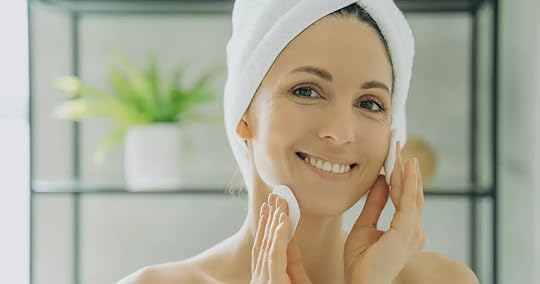
Post-treatment care is crucial for maximizing the benefits of skin pen microneedling. This also ensures a swift and complication-free recovery. Here’s our expert tips for you.
Gentle Cleansing. Use a mild, non-abrasive cleanser to keep the treated area clean. Avoid using exfoliating agents or harsh ingredients that can irritate the skin.Stay Hydrated. Keep your skin moisturized with a fragrance-free, hypoallergenic moisturizer. Hydrated skin heals faster and feels more comfortable during the recovery process.Nourish Your Skin. Use skincare products that nourish and support skin healing. For example, opt for products containing hyaluronic acid or growth factors.Follow-up Treatments. Follow-up appointments or additional treatment sessions might be advised by your skincare professional for the best results.Monitor Your Skin. Keep an eye on your skin’s response to the treatment. If you notice any unusual reactions or prolonged discomfort, consult your skincare professional.By following these guidelines, you ensure a smoother recovery and better results from your skin pen microneedling treatment. Proper aftercare not only enhances the effects of the procedure. It also helps maintain the health and beauty of your skin in the long run for a fresher skin appearance.
Wrapping UpIt’s evident that skin pen treatment stands as a beacon for those seeking radiant, rejuvenated skin. It offers a path to better-looking and fresher skin. This effectively addresses facial acne scars and enhances overall rejuvenation. If you’re ready to get this for yourself, Inner Ocean Center for Healing is the best place to go. Our team of experts specializes in skin pen treatment. We create a customized plan to address your specific needs. Reach out to us today and let us accompany you with your skin transformation.
The post Complete Guide to Skin Pen Microneedling first appeared on Inner Ocean Center for Healing.
January 31, 2024
Why RF Microneedling is Best For Your Skin?
RF microneedling has emerged as a revolutionary skincare technique. Many choose this minimally invasive procedure to address various skin concerns. It is versatile and can be applied to various areas of the body including the face, neck, chest, and hands.
In this article, we’ll explore the science behind radiofrequency microneedling. We’ll take a look at some of its benefits. Whether you’re grappling with aging skin, scarring, or uneven skin texture, understanding its role in skin treatments is crucial. So keep reading to discover how it could redefine your skincare routine.
What is RF Microneedling?RF Microneedling is a cosmetic procedure that combines traditional microneedling with radiofrequency energy to enhance skin rejuvenation. Unlike regular microneedling, which solely relies on physical needles to rejuvenate the skin, it introduces an additional element of radiofrequency. A device with fine needles creates tiny punctures in the top layer of the skin.
These microscopic punctures act as channels to deliver radiofrequency energy into deeper layers of the skin. This makes it particularly effective for addressing concerns like acne scars, fine lines, and stretch marks. The energy stimulates the body’s natural collagen and elastin production. The combination of micro-injuries and RF energy promotes a more robust healing process.
Read also: How Microneedling Can Give You the Smoother, Younger-Looking Skin You Desire
What Are The Benefits of RF Microneedling?
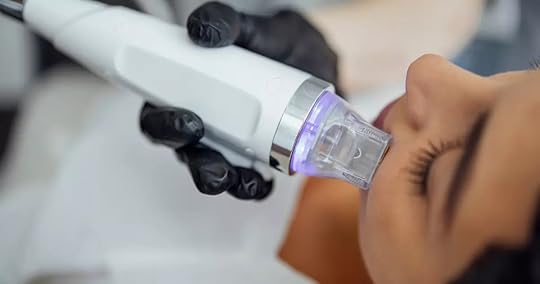
RF microneedling has marked its place as a pivotal development in aesthetic medicine. It offers tangible benefits for various skin concerns. Here are some of the things you’ll get to enjoy.
Skin TighteningSkin tightening is a standout benefit of radiofrequency microneedling. By delivering RF energy deep into the layers of skin, it triggers the natural wound healing process and the production of collagen. The new collagen tightens and lifts the skin. It reduces loose skin and creates a firmer, more youthful appearance. The thermal energy from the radiofrequency also enhances elastin fibers which contributes to tighter skin.
Reduced Wrinkles and Fine LinesRF microneedling treatment also shows efficacy in reducing wrinkles and fine lines. The combination of micro-injuries and radiofrequency waves boosts collagen production and remodels existing collagen fibers. This dual action smooths out facial wrinkles, including those challenging periorbital wrinkles.
Scar ReductionScar reduction, particularly for acne scarring, is another key benefit. The precise needle depth and controlled energy delivery target the scarred layer of skin. This breaks down old scar tissue. Over a series of treatments, this leads to a noticeable reduction in the depth and appearance of scars. This includes treating atrophic acne scarring and post-inflammatory hyperpigmentation.
Who Should Get RF Microneedling?Ideal candidates for treatment are individuals looking to address a variety of skin concerns. If you have moderate acne scars, uneven texture, or facial wrinkles, this treatment can offer significant improvements. It excels in boosting collagen growth which is vital for repairing and rejuvenating the skin.
Also, those individuals who are concerned about loose skin or want to have firmer skin will find this treatment beneficial. As mentioned above, it is effective in skin tightening.
However, this cosmetic treatment is not suitable for everyone. Those with active skin infections or certain medical conditions like severe skin diseases or blood disorders may not be the best candidates. Additionally, if you are taking blood-thinning medication or non-steroidal anti-inflammatory medication, it’s important to discuss this with your healthcare provider. These medications can affect the treatment’s safety and efficacy.
How Does RF Microneedling Work On Your Skin?

The treatment begins with a microneedling device, equipped with tiny, sterile needles. This device creates micro-injuries on the skin’s surface. These tiny injuries kickstart the skin’s natural healing process. As the skin heals, it produces new collagen and elastin fibers. Both of these are essential in promoting cell regeneration and rejuvenation.
Simultaneously, the RF microneedling device emits radiofrequency waves into the punctures to heat the surrounding tissue. As the microneedles penetrate the skin, they deliver RF energy into the deeper layers. The combination of micro-injuries from the needles and the heat energy accelerates the production of collagen and elastin.
As a result of increased collagen and elastin, the skin gradually becomes firmer and tighter. The skin’s texture also improves, becoming smoother and more even.
RF Microneedling Before and AfterIn this section, we provide a visual testament to the transformative effects of this advanced skincare treatment. Through these photographs, potential clients can witness significant improvements in skin texture, tone, and overall appearance. As you can see in the photos, the skin often displays signs of aging, scarring, or uneven texture. But after the treatment, there is a visible enhancement in the skin quality.
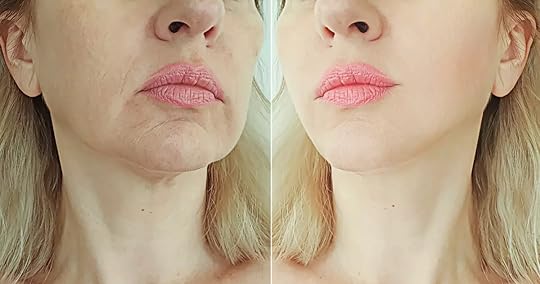
When considering an RF Microneedling session, understanding what to expect can ease any apprehensions. Having the right knowledge can also prepare you for the experience.
The treatment session starts with a consultation. This is where the practitioner evaluates your skin condition and discusses your goals. This discussion helps tailor the treatment plan to ensure the procedure addresses your specific concerns. The details you provide will also matter in the final cost. On average, the price ranges from $500 to $950 per session.
Once in the treatment room, your skin is cleansed thoroughly. A gentle cleanser may be used. A numbing cream will also be applied to your face to minimize discomfort.
The actual microneedling procedure involves an RF microneedling device. This device is equipped with gold-plated needles or ultrafine needles. It will create microscopic injuries in the outer layer of the skin.
Throughout the session, the professional will adjust the needle depth and energy level of the RF device to suit your face’s needs. This precise control is what makes RF microneedling an effective treatment. The combination of microneedling and RF energy works to remodel and rejuvenate the skin from within.
How Long Does It Take to See The Result?
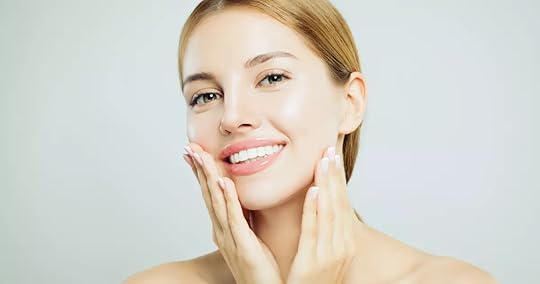
Immediately following an RF microneedling session, some clients may notice their skin appears plumper and more radiant. However, the more significant results unfold over time. This is because RF microneedling initiates a gradual yet profound healing process within the skin layers.
Typically, visible improvements start to become apparent within a few weeks after treatment. This is when the initial phase of collagen production kicks in. The most notable changes are usually observed about 2-3 Months after treatment. This period allows for the full cycle of collagen and elastin production.
Moreover, the number of treatment sessions plays a crucial role in the outcome. While a single session can yield noticeable results, a series of treatments is often recommended for more significant improvements. This is highly recommended for those cases of atrophic acne scarring or periorbital wrinkles.
It’s important to remember that individual experiences vary. Factors like age, skin type, the severity of skin issues, and adherence to post-treatment care can influence the results. For instance, younger clients or those with minor skin issues might see quicker results compared to older clients or those with more pronounced concerns.
What Are The Potential Side Effects of RF Microneedling?RF microneedling is known for its efficacy and safety. But just like any treatment, potential side effects can appear, especially when not done right. Here are some of the risks you might experience.
The most common side effect is skin irritation immediately following the procedure. This can include redness, swelling, and a feeling similar to a sunburn. These symptoms are generally mild and subside within 24-36 Hours. Your microneedling practitioner may recommend gentle skin care products to aid the healing process.
Some individuals may experience minor bruising. This happens to those with sensitive skin or taking certain medications. That’s why it is important to disclose any medication you use before the treatment.
Though extremely rare, infections might occur. However, following post-treatment care instructions like keeping the treated area clean is essential.
While RF microneedling is less invasive compared to some cosmetic surgeries or laser treatments, it’s still crucial to choose a qualified and experienced practitioner. The skill of the practitioner plays a significant role in minimizing side effects and ensuring the safety of the procedure.
How to Take Care of Your Skin After RF Microneedling Session?Caring for your skin after the session is essential for maximizing the treatment’s benefits. Here’s our guide to post-treatment care.
Immediately after your RF Microneedling session, apply gentle skincare products to soothe your skin.Protect your skin from sun exposure. It is more susceptible to sun damage and hyperpigmentation post-treatment. Use a broad-spectrum sunscreen with a high SPF. Wear a hat or use physical barriers when out in the sun for prolonged periods.For the first few days after treatment, use a gentle cleanser. Avoid any harsh skincare products that contain salicylic acid or other exfoliants. Your skin is healing. It’s important not to disrupt the wound healing process.
It’s advisable to avoid makeup for at least 24 hours after treatment. Let the skin breathe and recover without any blockages.Refrain from activities that induce sweating like heavy exercise for at least 24-36 hours post-treatment. Also, avoid swimming pools or saunas to reduce the risk of irritation or infection.
Keep your body well-hydrated. Maintain a balanced diet rich in antioxidants and vitamins as well. This helps support the skin’s healing process and overall health.
While side effects are generally minimal, it’s important to monitor your skin for any signs of infection or unusual reactions. Contact a skincare professional if you notice anything out of the ordinary.
Depending on your individual skin condition and treatment goals, additional treatments may be recommended.
By following these post-treatment care tips, you can enhance the results of your RF Microneedling treatment. This also contributes to the long-term health and beauty of your skin. Remember, taking care of your skin post-procedure is as crucial as the treatment itself for achieving the best possible outcomes.
How to Find The Best RF Microneedling Near Me?Maybe at this point, you’re ready to give this treatment a shot. Finding the best RF Microneedling provider near you requires careful consideration. You need to ensure that you receive the highest quality of care and achieve the best possible outcomes. Here’s our simple guide to help you in your search.
Research Local Providers. Start by researching clinics and medical spas in your area that offer RF Microneedling. Look for providers who specialize in advanced skin care treatments and have experience with RF skin tightening. Utilizing search engines and local directories can be a great starting point.Check Credentials and Experience. It’s essential to choose a provider who is well-qualified and experienced in performing RF microneedling. Check the credentials of the practitioners including their training. Providers with a background in dermatology or aesthetic medicine are often preferable.
Read Reviews and Testimonials. Look for reviews and testimonials from actual patients. This can give you insight into the treatment approach, treatment times, and the overall comfortable treatment experience. Pay attention to comments about the treatment of acne scars, hyperpigmentation, and other skin issues management. Check if the clinic follows stringent safety and hygiene protocols.
Consultation. Schedule a consultation to discuss your skin concerns, Previous Treatments, and what you hope to achieve with RF Microneedling. This is also the time to ask about the RF Device used, the Depth Of Penetration, and the Treatment Modality. A good provider will create a customized Treatment Plan based on your Facial Skin condition and goals.
Inquire About Treatment Plan and Costs. A good provider will create a customized treatment plan based on your facial skin condition and goals. Also, ask about the price per session and the number of sessions recommended for your skin type and concerns. Some providers may offer packages for multiple treatments which can be more cost-effective.
Aftercare Support. Ensure the provider offers comprehensive aftercare advice. Proper post-treatment care is vital for a holistic approach.
Look at Before and After Photos. Request to see before and after photos of previous clients who underwent the same procedure. This can give you a realistic idea of the results the clinic’s treatments typically provide.Wrapping Up
RF Microneedling stands out as a premier choice for those seeking to enhance their skin’s health and appearance. This advanced treatment offers a powerful solution for a range of skin concerns. From stimulating collagen production and reducing fine lines and wrinkles to improving skin texture and firmness, it is a game-changer in skin rejuvenation.
Now, if you’re ready to experience the remarkable benefits of this innovative treatment, Inner Ocean Center for Healing is here to guide you. Our expertly administered RF Microneedling service is designed to provide not just visible results but a truly transformative experience. Contact us today and let’s start your path to radiant, healthy skin together.
The post Why RF Microneedling is Best For Your Skin? first appeared on Inner Ocean Center for Healing.
January 29, 2024
Microneedling with PRP: Everything You Need to Know
Microneedling with PRP is an advanced skin treatment combining two effective methods for skin rejuvenation. It stands out as a modality of treatment that harnesses your body’s natural growth factors and healing capabilities to address a variety of skin concerns. Whether you’re dealing with facial scars or hyper-pigmentation, this treatment option offers a path to not just improved skin appearance but also enhanced skin health.
In this article, we’ll provide you with a clear understanding of the procedure, its benefits, and what you can expect from the treatment. Understanding its mechanism and applications can help you decide if this is the right treatment option for you. So continue reading to get essential information about this effective treatment.
What is Microneedling with PRP?
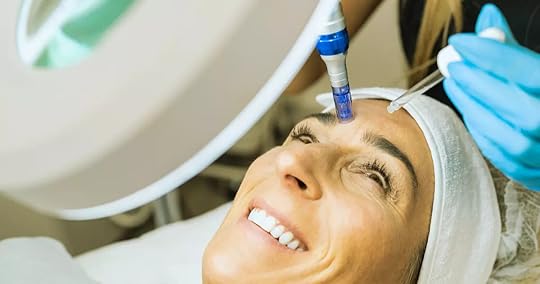
Microneedling with PRP is an innovative cosmetic procedure that combines the benefits of two well-established skin rejuvenation techniques. It’s a potent combination aimed at enhancing skin health and addressing a variety of skin concerns.
At its core, microneedling treatment or Collagen Induction Therapy uses a device equipped with fine micro-needles. These needles create micro-injuries on the skin’s surface. These tiny punctures trigger the body’s natural healing process. These also stimulate collagen production and cell reproduction. Collagen is a vital protein that is crucial for maintaining healthy skin. It imparts firmness and elasticity to give you smoother skin and a more youthful appearance.
PRP or platelet-rich plasma is derived from a blood sample taken from the patient during the treatment. This plasma is rich in growth factors and blood cells that play a pivotal role in the healing process. When applied to the skin following the microneedling procedure, the concentration of growth factors accelerates tissue repair and promotes collagen growth.
This combination has shown remarkable results in addressing skin conditions. Those include acne scars, surgical scars, stretch marks, uneven skin tone, and age spots. It is also effective for more general concerns like sun damage, enlarged pores, and overall facial rejuvenation.
What’s good about this facial treatment is that it is suitable for a wide range of skin types and skin colors. Unlike more invasive procedures such as laser treatments or chemical peels, it offers a gentler approach with minimal skin irritation and healing time.
While it’s a safe modality, it’s crucial to consider certain conditions before undergoing this treatment. People with active acne, skin cancer, or those prone to cold sores should discuss their concerns with a professional. It’s also not recommended for those who have had recent skin cancer screenings or treatments.
What Are The Benefits of Microneedling with PRP?Microneedling with PRP is not just a trend in the realm of aesthetic procedures. It’s a scientifically backed modality of treatment that offers significant benefits for skin health. This non-invasive cosmetic treatment has gained popularity due to its effectiveness in addressing multiple skin imperfections and enhancing overall skin quality. Let’s explore how this treatment, often called a vampire facial, stands out in promoting youthful skin and visible improvements in various skin concerns.
Collagen ProductionCollagen Production is a key benefit of microneedling with PRP. Its ability to stimulate the production of collagen is crucial for maintaining healthy skin. The micro-needles create controlled micro-channels in the layers of skin which triggers the body’s natural healing response. This process, coupled with the application of PRP, further enhances collagen synthesis. This leads to the restoration of skin elasticity and strength. Both are essential for maintaining a youthful appearance. These also help reduce atrophic acne scars and other facial scars.
Improved Skin Texture and ToneAnother remarkable benefit is the improvement of skin texture and tone. This microneedling treatment helps in the reduction of age spots, sun spots, and hyperpigmentation. It also enhances the overall smoothness and evenness of the skin. The natural healing process initiated by the treatment promotes the repair and rejuvenation of skin cells. This results in a brighter skin tone and refined texture. If you’re battling with uneven skin tone, the appearance of pigmentation, or general dullness of the skin, this is an effective solution for you.
Reduced Wrinkles and Fine LinesIf your skin care products cannot treat wrinkles and fine lines anymore, then opt for this non-invasive cosmetic procedure. The natural production of collagen and elastin fibers, stimulated by the microneedling portion of the treatment, fills in fine lines and wrinkles. Over time, you’ll notice a more youthful skin texture.
What To Expect During Microneedling with PRP Treatment?
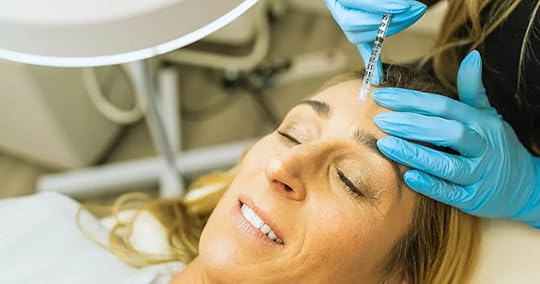
When considering microneedling with PRP treatment, it’s crucial to know what the process entails. This insight prepares you for the procedure and sets realistic expectations for achieving healthy skin.
The treatment typically begins with a blood draw which is similar to a routine lab test. This blood is then processed to concentrate the platelets. This concentration of platelets plays a pivotal role in the PRP part of the treatment. They are instrumental in the natural healing process and skin rejuvenation.
Next, the regular microneedling session commences. As mentioned above, microneedles will be used to create tiny punctures in the skin. These punctures will stimulate the skin’s repair process.
After the microneedling, the prepared PRP is applied to the treated skin. The skin’s absorption of the PRP is maximized due to the micro-channels created by the microneedling. This enhances the healing and rejuvenation process. It also promotes improvement in skin quality and texture.
It’s important to note that during the treatment, you may experience minimal discomfort. However, a topical numbing cream is typically applied beforehand to minimize any pain. The entire session may last about an hour, depending on the cosmetic treatment plan created for you.
Before and After Microneedling with PRP: What Do You Need To Prepare?It typically takes a few days to a week for the skin to heal. The recovery phase is relatively swift and manageable. Typically, you can expect a recovery period of about 24 to 72 hours. However, this can vary depending on factors like skin sensitivity and the extent of the treatment.
Here’s what you typically need to do to prepare for the procedure, and what to expect before and after.
Before Microneedling with PRPConsultation. Meet with a dermatologist or skincare professional to determine if you are a good candidate for the procedure.Medical History. Disclose any medical conditions, skin issues, allergies, or medications you are taking.
Avoid Certain Medications and Supplements. Stop using blood thinners, NSAIDs (like ibuprofen), and certain supplements (like vitamin E and fish oil) a week before the procedure. Follow the advice of your doctor.
Skin Care Routine. Do a gentle skincare routine. Avoid harsh treatments, exfoliating products, and retinoids for a week before the procedure.
Avoid Sun Exposure. Stay out of the sun and avoid tanning beds for a few days to a week when you’re getting this procedure.
Stay Hydrated. Drink plenty of water in the days leading up to the treatment.
No Makeup. Come to the appointment with a clean, makeup-free face.After Microneedling with PRPRedness and Swelling. Expect some redness, swelling, and a feeling similar to a sunburn immediately after the procedure.Hydration and Gentle Care: Keep your skin hydrated with gentle, fragrance-free products. Avoid exfoliating or using harsh products.Avoid Sun Exposure. Avoid direct sunlight in the first few days after treatment. It is best to use a broad-spectrum sunscreen with at least SPF 30.No Makeup: Avoid wearing makeup for at least 24 hours after the procedure.Avoid Strenuous Activities and Alcohol-based Products: Refrain from heavy exercise and activities that cause excessive sweating for a few days. These can exacerbate skin irritation. Don’t drink liquor as well as it slows down the healingFollow-up Care: Follow the specific post-care instructions given by your dermatologist or skincare professional. Avoid any treatments that may irritate the skin such as light therapy or other cosmetic treatments.
Additional Considerations
The skin care regimen post-treatment should be gentle and hydrating. Using mild, non-irritating skin care products can enhance the treatment’s effectiveness. It’s also important to avoid picking or scratching the treated area to prevent any potential adverse effects.
Also, remember that PRP is obtained from your own blood and drawn before the procedure. The blood is then processed to concentrate the platelets. There’s a small risk of infection, so it’s crucial to keep the treated area clean. Follow post-care instructions carefully as well.
When to Contact A DoctorIf you experience signs of infection or any other concerning symptoms, contact your healthcare provider immediately.
How Long Does It Take to See The Result?Initial improvement can be noticed as early as a few weeks post-treatment. These early changes often include a more even skin tone and a brighter complexion. A reduction in the appearance of sun damage and scars are starting to fade away.
But the most significant results generally become apparent in the 3rd month. This is when the natural growth factors stimulated by the treatment have had enough time to significantly impact the skin’s appearance and texture.
For many, the full benefits of microneedling with PRP are most evident in the 6th month post-treatment. This timeline can vary depending on individual factors like age, skin type, the severity of skin concerns, and lifestyle. Factors like exposure to direct sunlight, use of certain skin care products, and overall level of care for the skin can influence the outcome.
How Many Microneedling with PRP Sessions Do You Need?

The number of sessions required varies greatly depending on individual skin conditions, desired outcomes, and how your skin responds to the treatment. Generally, most individuals see noticeable improvement after 3 to 4 sessions. However, for more significant skin concerns additional sessions may be necessary to achieve optimal results. This is advisable for those dealing with deep wrinkles, atrophic acne scars, hyperpigmentation, or severe skin issues.
Each single treatment session works cumulatively with the previous one. Typically, these sessions are spaced about 4 to 6 weeks apart to allow the skin sufficient time to heal and regenerate. It’s also crucial to maintain a level of regular microneedling sessions for continued skin health. It can occur every 6 to 12 months. Maintenance sessions can help sustain the benefits achieved.
For the cost, it can vary depending on several factors. These include geographic location and the expertise and reputation of the provider. The specific needs and goals of your cosmetic treatment plan also matter. On average, a single treatment session can range from $200 to $700.
Wrapping UpMicroneedling with PRP is an advanced treatment that offers a powerful solution for various skin concerns. It stands as a beacon of hope for those seeking to restore their skin’s youthful radiance and health.
If you’re considering taking this step, Inner Ocean Center for Healing provides an exceptional microneedling service tailored to your individual needs. Our skilled professionals use the latest techniques to ensure you receive the highest quality of care. With our focus on personalized treatment plans and a nurturing approach, we stand out as a premier choice for your skin rejuvenation journey. Reach out to us and discover how our microneedling service can be your pathway to vibrant skin health.
The post Microneedling with PRP: Everything You Need to Know first appeared on Inner Ocean Center for Healing.
January 25, 2024
Benefits of Microneedling for Acne Scars
Are you tired of your acne scars that don’t fade away?
Acne scars are stubborn and a disheartening reminder of skin struggles. These often diminish confidence and overshadow one’s natural beauty. But get discouraged yet because there’s hope.
Microneedling emerges as a promising solution in the realm of dermatological advancements. This innovative procedure uses fine needles to rejuvenate the skin and stimulate collagen production. Due to its effectiveness, it has become popular, especially for those who are looking for a non-invasive acne treatment procedure.
In this article, we’ll delve into the benefits of microneedling for acne scars. We’ll also provide valuable insights that will help you make an informed decision. So continue reading to learn how it can be a game-changer for your skin health.
What Are Acne Scars?

Acne scars are lasting skin alterations that appear after an active acne has healed. They are the result of the skin’s natural healing process. When acne causes skin damage, the body reacts by initiating a repair process. It involves the production and remodeling of collagen fibers within the skin tissue. This collagen response is crucial in determining the formation of an acne scar.
The development of facial acne scars is closely linked to the severity of the acne. More severe acne penetrates deeper layers of skin. It is more likely to leave a scar and needs a series of treatments. The extent and nature of these scars can vary. But most of the factors that influence it are genetic predisposition and skin type. The way it is treated or managed during acne breakout is also a factor.
It’s important to note that the appearance of scars caused by acne has a significant emotional and psychological impact on many individuals. They can affect one’s self-esteem and body image. Understanding and effective treatment of these scars are crucial.
What Causes Acne Scars?Understanding what causes acne scars is vital in seeking the right acne scar treatment. While various cosmetic procedures are available, knowing the root cause helps in choosing the most effective treatment modalities. Treatments like laser therapy, microneedling procedures, and others focus on altering the skin tissue and collagen production to improve the appearance of scars.
Here’s a closer look at what causes acne scars.
InflammationInflammation plays a crucial role in the formation of acne scars. When acne causes significant swelling, it damages the surrounding tissue. The deeper and more intense the inflammation, the higher the likelihood of a scar during the wound healing phase. Inflammatory acne, particularly cystic acne, tends to disrupt the skin tissue significantly. This disruption often leads to scar formation.
Deep Skin LesionsDeep skin lesions are a primary cause of acne scars. These lesions extend into the deeper layers of the skin. Throughout the natural process of wound healing, these disrupt the skin tissue and collagen levels. The body’s natural response to repair this damage often leads to scar formation. This especially occurs when the healing is uneven during the wound healing phase.
Popping or Picking AcnePopping or picking acne is a common yet harmful practice that can exacerbate scarring. When acne lesions are manually interfered with in the early wound healing phase, it disrupts the natural collagen and the natural healing process of the skin. This leads to deeper wounds and the potential for more significant scars.
Delayed Acne TreatmentDelayed acne treatment can lead to more severe or prolonged acne. As a result, the risk of scarring is more likely to happen. Early and effective management of acne is crucial to prevent the formation of deep scars and preserve skin texture.
Genetic FactorsGenetic factors also play a significant role in the development of acne scars. Individuals with a family history of acne scars may have a higher propensity to develop them. A genetic predisposition influences the normal process of wound healing.
Collagen ResponseIn the process of wound healing, two key processes are involved in scar formation: the loss of collagen and the overproduction of collagen. Dropping in the production of collagen can lead to indentations. Excess collagen levels can cause raised scars to appear. This imbalance in collagen production and skin tissue repair is what leads to the appearance of acne scars.
Skin TypesSkin types also influence the likelihood and type of acne scars. Certain skin types, particularly those prone to oiliness or dryness, may be more susceptible to scarring. Additionally, darker skin tones may experience post-acne hyperpigmentation. This condition isn’t scarring but can accompany or follow acne. It results in dark spots where acne lesions are present.
Hormonal FactorsFinally, hormonal factors can contribute to the development of acne scars. Hormonal imbalances during puberty, pregnancy, or due to certain health conditions can exacerbate acne. These can also cause more severe breakouts and increased risk of scarring.
What Are The Different Types of Acne Scars?Each type of acne scar has its own set of causes and characteristics. It is important to note that the choice of acne scar treatment method varies. Understanding these types of scars is crucial for patient satisfaction for acne scar reduction.
There are two primary types of acne scars: atrophic scars and hypertrophic scars. Let’s discuss these below.
Atrophic Acne Scars

Atrophic acne scars are the result of loss of skin tissue. They often have a sunken or pitted appearance. They are small, round depressed acne scars that often vary in depth and size. These cause uneven skin tones that are particularly noticeable under certain lighting conditions.
Mostly, the cause of atrophic acne scars is the insufficient production of collagen during the healing process. When the body fails to produce enough collagen to fill the space left after an acne lesion heals, it results in a depression or pit on the skin’s surface.
Individuals who have experienced severe or inflammatory acne are more prone to developing atrophic acne scars. These scars are more likely to form in areas where the skin is thinner such as on the cheeks and temples. These can be further classified into different types:
Boxcar ScarsBoxcar scars are a specific type of atrophic acne scar that present as round or oval depressions with sharp, vertical edges. They are somewhat similar to chickenpox scars in appearance. These scars are wider than icepick scars and give the skin a pitted, uneven look. The depth can vary. Some are quite shallow and others are more pronounced.
The cause of boxcar scars is the destruction of collagen due to severe acne such as nodules or cysts. When these types of acne lesions heal, they leave behind a loss of tissue and result in a sunken scar. Individuals who have had severe, inflammatory acne are more prone to developing boxcar scars. These scars are more likely to occur on areas of the face where the skin is thicker like on the lower cheeks and jawline.
Icepick ScarsIcepick scars are among the severe side effects of acne. They appear as narrow, deep, and sharp indentations that extend into the papillary dermis. They resemble the puncture marks that would be left by an ice pick. These scars are typically small in size but quite deep. These make them one of the more noticeable types of acne scars.
The primary cause of icepick scars is the inflammation from severe acne which penetrates deep into the skin. When these deeper layers of skin are damaged, the surrounding tissue collapses into a narrow, V-shaped scar as it heals. This type of scarring is a result of the skin’s inability to regenerate tissue effectively. These scars are commonly found on the cheeks and forehead. They are also known for being particularly challenging to treat due to their depth and narrow opening.
Rolling ScarsRolling scars are characterized by their undulating, wave-like appearance on the outer layer of the skin. These scars typically have a shallow depth but cover a larger area. They create a rolling or uneven texture on the skin’s surface. They are often soft to the touch and give the skin a bumpy, irregular look.
The cause of rolling scars is the fibrous bands that develop between the skin and the underlying tissue during the healing process of widespread, long-term acne. These scars are typically found on areas of the face where the skin is thicker.
Hypertrophic Scars
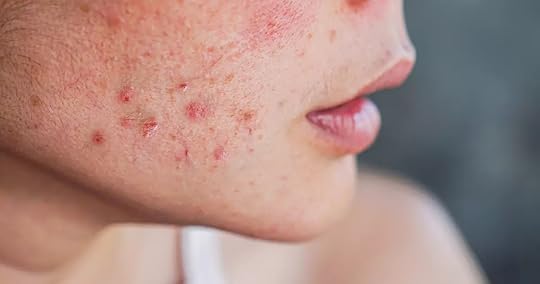
Hypertrophic scars are also among the negative side effects of acne. These are raised scars that remain within the boundary of the original wound. These scars are typically red or pink and can be itchy or painful. They often have a firm, raised texture and may appear thicker than the surrounding skin.
The scars occur when there is excessive collagen formation during the skin’s healing process after active breakouts. This overproduction results in a buildup of scar tissue at the site of the wound.
Individuals with a history of severe or deep skin wounds are more prone to developing hypertrophic scars. They are also more common in younger individuals. These tend to appear on certain areas of the body where the skin is tighter such as the shoulders or chest. Unlike keloids, improvement of scar appearance may become flatter and less noticeable over time. However, they can still pose a cosmetic concern. That’s the reason why many seek skin rejuvenation to improve their appearance.
Keloid ScarsKeloid scars are also raised, thickened tissues on the skin that extend beyond the original wound area. They have a smooth and shiny appearance which can grow progressively larger over time. These often appear as pink, red, or purple. Keloids are caused by an overly aggressive healing process where the body produces excessive amounts of collagen at the site of the wound.
Individuals with darker skin tones are more prone to developing keloid scars. This increased susceptibility is likely due to genetic factors that influence their skin’s response to inflammation and injury. Unlike other types of scars, keloids may continue to grow and spread beyond the original injury site. That’s why they are more challenging to treat and manage.
Post-inflammatory HyperpigmentationPost-inflammatory hyperpigmentation (PIH) is a common skin condition that occurs after an inflammatory wound heals. It manifests as flat areas of discoloration on the skin. PIH typically appears as darkened patches or spots. Colors can vary from pink to red, purple, brown, or black depending on the skin tone and the depth of the discoloration.
PIH is caused by an overproduction of melanin—the pigment that gives skin its color. When the skin becomes inflamed due to acne, the body may produce too much melanin during the healing process and darken the areas.
How Does Microneedling Treat Acne Scars?
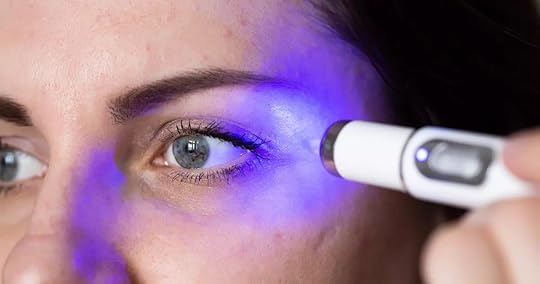
Skin microneedling therapy is a minimally invasive procedure that gained traction in the treatment of acne scars. Also known as collagen induction therapy, it holds promise for skin concerns, especially for the enhancement of scar appearance.
The process of this cosmetic treatment involves using a device equipped with fine needles. Those needles create micro-injuries in the stratum corneum—the outermost layer of the skin. These tiny punctures trigger the body’s natural healing response by initiating collagen synthesis and elastin production. The boost in these essential proteins helps to fill in and smooth out the texture of atrophic post-acne scars, moderate acne scars, and even surgical scars.
A key aspect of microneedling’s efficacy lies in its ability to promote collagen stimulation in a controlled manner. The procedure encourages the skin to rebuild and repair itself. This results in a brighter skin. Clinical studies have shown significant improvement in skin texture and scar appearance following a series of microneedling treatments.
The versatility of microneedling extends beyond treating acne scars. It is also used for overall skin rejuvenation. It can address skin issues like uneven skin tone, and active skin inflammation. This gives simple skin an overall brightness. Moreover, the procedure can improve the efficacy of topical treatments. The micro-injuries allow for deeper penetration of skincare products.
Microneedling for Acne: Before and AfterMicroneedling offers a promising solution for those struggling with acne scars. The treatment sessions provide a way to enhance collagen production and elastin production. It improves the skin’s natural healing process after active acne breakouts. It stands out as an effective, minimally invasive option in the wide array of cosmetic treatments and aesthetic procedures available today.
Here are some sample photos of people who went through skin microneedling therapy for acne scars.

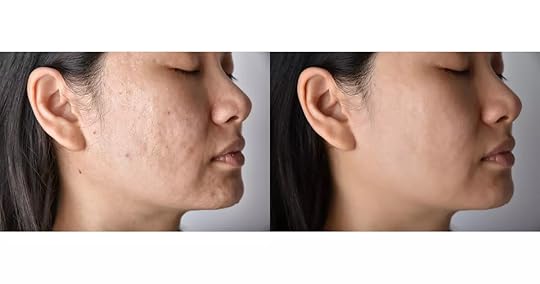
The journey to clear skin through microneedling is not an overnight process. It’s a gradual and deliberate path that involves patience and care. When it comes to treating acne with microneedling treatment, understanding the timeline for visible results is crucial.
Typically, the visible improvement of scar appearance can be seen after several sessions. An average microneedling session, overseen by a board-certified dermatologist, may last for about 30 minutes to an hour. It is recommended to have 3-6 treatments spaced about 4-6 weeks apart. This spacing is vital to allow the skin to heal properly. It also maximizes the benefits of the treatment.
The exact number of sessions and the time it takes to see significant improvement depends on various factors. Those include the severity of the acne, the individual’s skin type, and how well their skin responds to the treatment. While some may notice a moderate improvement in their acne scars after just a few sessions, others might require additional treatments to achieve their desired results.
What Are The Side Effects of Microneedling for Acne Scars?Post-treatment, the skin may show signs of minor skin irritation, redness, or swelling. Typically similar to a mild sunburn. But nothing to worry about as it subsides within a few days. A numbing cream is applied to minimize discomfort before the session begins.
Another potential side effect is skin dryness and flaking in response to skin microneedling. This is a normal part of the skin’s healing process as it undergoes collagen synthesis and elastin production. It’s important to keep the skin moisturized and follow the aftercare instructions.
Bruising and bleeding are rare and usually minor. These are more likely to occur in sensitive areas or those with sensitive skin. The needles used in microneedling are very fine, so significant bleeding is uncommon. But a few spots of blood during the procedure are normal.
Infections are an exceedingly rare side effect of microneedling when performed in a professional setting. However, ensuring that the procedure is done in a clean environment and that the equipment is sterile is crucial. A reputable microneedling clinic or private dermatology office will adhere to strict hygiene standards to minimize this risk.
Lastly, allergic reactions to the anesthetic cream or other products used during or after the procedure are possible. Discussing any known allergies with the healthcare provider during the microneedling appointment is essential. It’s important to remember that these side effects are generally temporary and often resolve within a few days to a week.
Wrapping UpMicroneedling for acne scars stands out as a beacon of hope for those yearning to reclaim their skin’s natural beauty. This transformative procedure harnesses your body’s own healing mechanisms. It effectively diminishes the appearance of acne scars and promotes a more youthful, radiant complexion.
If you’re seeking a path to revitalized skin, Inner Ocean Center for Healing offers a microneedling service tailored to your unique needs. Choosing us means choosing a partner who understands your journey towards skin rejuvenation. We offer an experience that integrates holistic care with cutting-edge technology.
Start your journey to brighter, smoother skin with us. Contact us today to explore how our microneedling service can be your gateway to renewed confidence.
The post Benefits of Microneedling for Acne Scars first appeared on Inner Ocean Center for Healing.
January 19, 2024
Microneedling for Wrinkles: How Does It Help?
Microneedling is a dermatological procedure gaining attention for its effectiveness in reducing wrinkles. It involves using fine needles to create tiny punctures in the skin. This process stimulates collagen production—an essential factor in maintaining skin elasticity and reducing signs of aging. Unlike more invasive treatments, microneedling offers a less aggressive option with promising results.
In this article, we’ll provide an in-depth look at how microneedling for wrinkles works. For those considering an alternative method to achieve smoother, younger-looking skin, this read offers valuable insights. So keep reading.
Understanding Wrinkles and Aging: What’s The Connection?

Wrinkles are more than just lines on the skin. These are the most visible indicators of the aging process. Understanding their formation requires a closer look at the skin’s structure. Skin aging involves changes in multiple layers which are primarily influenced by the reduced production of collagen and elastin. These proteins are essential for maintaining skin elasticity and firmness.
With age, the skin’s ability to produce collagen diminishes. A decrease in collagen production leads to a loss of volume and firmness. This process results in the formation of deep wrinkles and shallow wrinkles. Both types alter the skin texture and skin tone.
Another factor contributing to wrinkle formation is environmental exposure. The UV light accelerates the breakdown of collagen and elastin fibers.
Genetics also play a role in how skin ages. Some people might experience perceptible wrinkles earlier than others due to genetic factors that determine skin structure and function. Additionally, lifestyle choices like smoking, poor diet, and inadequate hydration can expedite the aging process. Lifestyle can also influence the size of wrinkles and overall skin health.
As the skin ages, other changes also occur. For instance, a reduction in sebum production and alterations in the stratum corneum. These changes can lead to drier skin making it more susceptible to wrinkling. The skin also becomes thinner and less able to repair itself. When this happens, it becomes more vulnerable to damage and slower to heal.
While all skin types age, the aging process can look different depending on the individual’s skin characteristics. For example, people with darker skin tones may experience aging signs differently compared to those with lighter skin tones. Also, they may have more noticeable dark spots, uneven skin tone, and bigger pores. It is due to differences in skin structure and melanin content. There is something that triggers their skin to produce extra melanin—a substance that gives skin its color.
What Causes Premature Aging of The Skin?Premature aging of the skin is a concern that many face. That’s why many seek solutions like microneedling treatment to combat its effects. But what triggers this early onset of aging? Understanding the causes is essential in both prevention and treatment.
One primary factor is sun exposure. UV rays from the sun break down collagen and elastin fibers which are crucial for maintaining skin elasticity. This breakdown leads to the early appearance of deep wrinkles, facial wrinkles, and perceptible wrinkles.
Another contributing factor is lifestyle choices. Smoking, for example, accelerates skin aging. The nicotine ruins the cells in your body which leads to wrinkles, sagging, and a gaunt face. Similarly, poor nutrition and dehydration result in a duller complexion and increased appearance of wrinkles.
Stress affects skin health as well. Chronic stress can cause inflammation and hormonal imbalances. All these can turn into skin issues like acne scars and accelerated aging.
Exposure to harsh chemicals, toxins, and environmental pollutants can also accelerate skin aging. These substances can cause oxidative stress which damages the skin and lead to premature aging.
Lastly, skin care products are also a culprit. Harsh cleansers can strip the skin of its natural oils. The dryness exacerbates the appearance of wrinkles.
Does Microneedling Really Work for Wrinkles?

When it comes to addressing deep wrinkles and facial skin imperfections, many turn to microneedling procedures. But does it truly deliver results? Let’s examine the efficacy of microneedling for wrinkles backed by scientific understanding and professional insights.
Microneedling, also known as collagen induction therapy or percutaneous collagen induction, uses micro-needles to create tiny punctures in the layer of skin. This controlled injury triggers the body’s natural healing process. This involves the activation of various growth factors, cytokines, and other signaling molecules that are important in repairing skin tissues.
Then, there is an increased production of collagen and elastin which is the key outcome of the wound healing response. These are essential proteins that provide structural support to the skin. An increase in collagen helps in skin tightening while elastin contributes to its elasticity.
As the body produces more collagen and elastin, the skin undergoes a remodeling process. This can lead to the smoothing out of fine lines and wrinkles as well as improvements in skin texture and overall appearance.
Microneedling also creates microchannels in the skin which temporarily increases its permeability. This can enhance the absorption of topical skincare products. It allows for better penetration of ingredients that promote hydration and skin renewal.
Clinical studies and objective assessments by medical professionals have shown promising results. Participants often notice a significant reduction in wrinkles and improved skin texture. This procedure is especially effective for facial wrinkles including those around the eyes and mouth. It can also fade facial acne scars and surgical scars.
In addition to wrinkle reduction, microneedling is an effective procedure for other skin concerns. It can aid in acne treatment and improve the appearance of stretch marks. It can even help with hair loss by stimulating hair growth factors.
Another benefit of microneedling is its versatility. It suits various skin types including sensitive skin and darker skin tones. However, it’s crucial to consult with a qualified dermatologist or microneedling specialist to determine if you’re an ideal candidate for microneedling. Those with active skin infections, chronic skin diseases, or taking certain topical medications may not be qualified for this cosmetic procedure.
How Does Microneedling Stimulate Collagen and Elastin Production?Microneedling stimulates collagen and elastin production through the controlled micro-injuries it creates in the skin. The process involves a series of steps that activate the body’s natural healing response.
Micro-injuriesMicroneedling involves creating micro-injuries using fine micro-needles. These tiny punctures reach the deeper layer of skin without causing significant damage. This action is crucial as it kickstarts the body’s natural healing mechanism. It lays the foundation for new tissue growth and repair.
Inflammation and HemostasisFollowing these micro-injuries, the skin undergoes an immediate inflammatory response. This phase is marked by hemostasis where the body works to stop bleeding and stabilize the area. This process is instrumental in preparing the skin for the next phases of healing. This time, it sets the stage for new tissue development and skin regeneration.
Release of Growth FactorsIn response to the micro-injuries, the body releases various growth factors as well. These include key proteins like TGF-β, PDGF, and FGF. All of these are vital for stimulating cellular activities that lead to skin repair and regeneration. The release of these growth factors is a critical step in collagen formation and elastin production.
Fibroblast ActivationOne of the pivotal outcomes of growth factor release is the activation of fibroblasts. These cells, residing in the skin, are primarily responsible for generating collagen and elastin. The activated fibroblasts migrate to the injury sites. This begins the process of collagen and elastin synthesis.
Collagen and Elastin SynthesisWith fibroblasts activated, the skin starts producing more collagen and elastin. Collagen works to provide structural integrity and firmness to the skin. Elastin, on the other hand, contributes to its elasticity and resilience. This increased production helps in repairing the micro-injuries and leads to the reduction of the appearance of wrinkles and skin imperfections.
Tissue RemodellingThe final phase in microneedling’s impact on the skin is tissue remodeling. As the new collagen and elastin mature and organize, the skin transforms. This results in enhanced skin texture and a reduction in perceptible wrinkles. It gives you a more youthful appearance.
Microneedling for Wrinkles Before and AfterThe transformative power of microneedling is vividly captured in the photo below. The image showcased real results from our client who turned to microneedling for a non-invasive solution to combat wrinkles. This transformation is a testament to microneedling’s ability in skin tightening and reversing signs of aging.
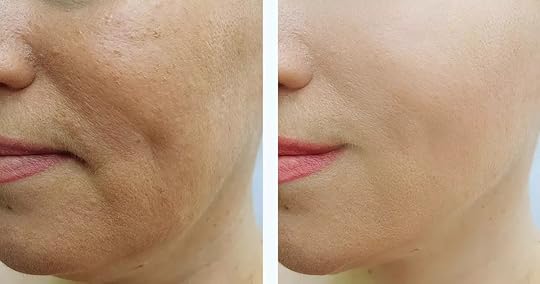
Unlike more invasive procedures, microneedling has fewer side effects. The healing time is also shorter. Here are the potential side effects you may experience which heal within a few days posttreatment.
Skin Irritation and Redness. These are some of the most common side effects post-microneedling . Immediately after the treatment session, you’ll experience a mild sunburn. Nothing to worry about as these effects will subside after a few days. Swelling and Bruising. Some individuals may experience slight swelling and bruising. This is a natural response to the micro-needles penetrating the deeper layer of skin. These are generally minimal and resolve quickly. Dryness and Flaking. As the skin heals and dead skin cells are shed, dryness and flaking may occur. This is a part of the natural skin remodelling process. Using hydrating topical products like hyaluronic acid can alleviate these symptoms. Infection Risk. While rare, there is a small risk of infection. This happens when the microneedling device is not properly sterilized or if aftercare instructions are not followed. It’s crucial to undergo microneedling with a professional microneedling specialist and adhere strictly to their aftercare advice. Temporary Pigmentation Changes: Individuals with darker skin tones might experience temporary changes in skin pigmentation. This side effect is usually transient. You can minimize this by avoiding sun exposure and using sunscreen post-procedure. Rare Side Effects: In very rare cases, more serious side effects can include keloid scars and cold sores reactivation. But this only applies to those with a history of herpes simplex. Or if you have an allergic reaction to topical products used during or after the procedure. It is best to be honest with your practitioner during the consultation, especially if you have a history of these issues. Read our article to know what you need to do before and after microneedling .How Many Microneedling Sessions Do I Need to Get Rid of My Wrinkles?

The number of microneedling sessions needed to address wrinkles can vary depending on several factors. These include the severity of the wrinkles, individual skin response, and the specific goals of the treatment. In general, practitioners recommend multiple sessions to achieve optimal results.
Typically, a series of 3 to 6 microneedling sessions spaced about 4 to 6 weeks apart is common. However, this can vary. Some individuals may require more or fewer sessions. For more superficial concerns or mild wrinkles, fewer sessions might be sufficient. While deeper wrinkles or more significant skin issues may need additional treatments.
It’s essential to have realistic expectations. Remember that microneedling may not completely eliminate deep or stubborn wrinkles. Combining microneedling with other complementary treatments or skincare products may enhance results. But make sure your dermatologist or skincare professional recommends those products to you.
Additionally, maintenance sessions may be advised to prolong the benefits of microneedling over time. The healthcare provider performing the procedure will assess your skin condition. After the assessment, he/she will discuss your goals and formulate a personalized treatment plan based on your specific needs.
That’s why it’s crucial to consult with a licensed and experienced practitioner. They can provide a thorough evaluation to ensure that the treatment is suitable for your skin type and concerns. Most importantly, they will guide you on the appropriate number of sessions needed for the best possible outcomes.
It is also worth noting that, on average, the effects of microneedling can last anywhere from 3 to 5 months after a completed series of treatments. However, this duration can extend up to 6 months or longer. This extended duration depends on individual skin characteristics, overall health, and the age of the skin.
Also, factors such as skin care regimen, lifestyle, and environmental exposure play a significant role in the longevity of microneedling results. Consistent use of quality skin care products can prolong the positive effects. For example, topical retinoids, vitamin C serum, and sun protection. Similarly, maintaining a healthy lifestyle with a balanced diet, and adequate hydration can also contribute to longer-lasting results.
Wrapping UpMicroneedling for wrinkles stands out as a remarkable solution for those seeking to rejuvenate their skin. Its benefits translate into significant wrinkle reduction, improved skin texture, and a more youthful appearance. This minimally invasive procedure has become a go-to choice for effective anti-aging treatment.
If you’re looking to embrace the transformative benefits of microneedling, the Inner Ocean Center for Healing offers a specialized service tailored to meet your unique needs. Our expert team uses the latest techniques and state-of-the-art microneedling devices to ensure safe, effective, and personalized treatments. Choosing us means opting for a service that prioritizes your well-being and satisfaction. Schedule your consultation today to rediscover your skin’s natural beauty.
The post Microneedling for Wrinkles: How Does It Help? first appeared on Inner Ocean Center for Healing.
January 17, 2024
Before and After Microneedling: Things You Should Know
Microneedling is a transformative experience that holds the promise of addressing various skin concerns. This cosmetic skin treatment creates micro-injuries in the outermost layer of skin. These controlled injuries trigger collagen production. From acne scars to aging-related skin issues, consider it as your ally in skin health.
This article guides you through the things you need to know before and after microneedling. Read on and take the first step towards unlocking the secrets to a more confident and youthful you. Your skin’s transformation awaits—let’s dive in together!
What is Microneedling? An OverviewMicroneedling offers comprehensive skin rejuvenation. Through a specialized device with fine, sterile needles, it creates controlled micro-injuries on the skin’s surface. The minimally invasive treatments trigger the body’s natural healing response.
If you’re new to this cosmetic procedure, here’s a quick overview of everything you need to know. You can also read our comprehensive article to learn more about microneedling.
About MicroneedlingOver the years, it has been subject to numerous clinical studies and research. Its transformative nature allows patients to have a youthful appearance. Here’s a closer look at five key facts about microneedling treatment:
This popular treatment is a form of collagen induction therapy (CIT). It promotes the natural formation and production of collagen for improved uneven skin texture and skin tightening.
It addresses a spectrum of skin concerns. Those include the reduction of acne marks, fine lines, and stretch marks. It also improves skin tone.It is suitable for various skin types and tones. As a result, it is a versatile option for individuals seeking youthful skin.The microneedling procedure is performed using microneedling devices with adjustable needle depth. Each is designed to deliver precise and comfortable needle penetration.Optimal results often require a series of treatments. Typically spaced at 4-6 week intervals. This provides a gradual enhancement in skin quality and the recovery process.Safety of MicroneedlingMicroneedling stands out as a safe and effective cosmetic treatment. Here are five considerations regarding the safety of microneedling:
It has a low risk of side effects when a qualified professional performs it.Patients may experience mild discomfort during the procedure. You can use numbing cream for a more comfortable experience.It has minimal downtime. Individuals can resume their daily activities shortly after the treatment session.The depth of the needles is adjustable to suit individual skin concerns and conditions. This ensures a personalized and safe approach.Before undergoing a microneedling session, individuals can benefit from a complimentary consultation. A skilled professional will assess their suitability and address any concerns.Microneedling BenefitsThe benefits of microneedling extend beyond skin deep. It offers a comprehensive approach to common skin conditions. Here are five notable advantages:
The procedure stimulates the natural production of collagen. This enhances skin elasticity and firmness.It diminishes the appearance of stretch marks, acne scars, and pock marks. This promotes a smoother texture and radiant skin.Microneedling reduces uneven skin texture, the appearance of wrinkles, and fine lines. It also addresses sun damage and combats the signs of aging. This gives you a more youthful and glowing skin complexion.Microneedling creates micro-channels. This means that skincare ingredients like hyaluronic acid and vitamin C can penetrate more effectively.Microneedling Side EffectsWhile microneedling is generally safe, it’s crucial to know the potential side effects. Here are three considerations:
Temporary redness and inflammation are common immediately after the procedure. These typically subside within a few days.Some individuals may experience heightened skin sensitivity. This is usually temporary and resolves as the skin heals.While rare, there is a minimal risk of infection. That is why you should always follow microneedling aftercare instructions diligently.Microneedling CostThe cost of microneedling can vary based on various factors. Those include geographical location, the expertise of the professional, and the specific type of microneedling device used. On average, a single microneedling session may range from $200 to $700. For optimal results, individuals may require 3-5 treatment sessions.
Is Microneedling Right For You?

Going on a journey toward skin rejuvenation is a personal choice. However, it involves understanding both the procedure and your individual needs. Let’s delve into key considerations to help you make an informed decision.
Skin Type and Concerns. Microneedling is versatile and suitable for various skin types. As mentioned above, it addresses concerns such as acne scarring, deep wrinkles, and uneven texture. If you’re looking to improve your aged-looking skin, it is a promising option.Boost in Collagen. It is an ideal treatment if you want to stimulate your skin’s natural collagen production. Controlled micro-injuries from a bunch of needles promote elasticity and firmness. It also triggers the body’s healing response and encourages collagen growth.
Commitment to the Healing Process. Before you undergo the treatment session, remember that it is not a one-time fix. To see results, you need to have at least three to six sessions. If you can commit to the healing process and gradual improvement, the result is beneficial.
Post-Treatment Care: Microneedling requires post-treatment care to optimize results and minimize any potential side effects. If you’re diligent about following aftercare instructions, you’ll get a rewarding experience.
How to Prepare Your Skin Before Your Microneedling Treatment?
Proper preparation sets the stage for optimal results. Here’s our guide on how to prepare your skin prior to a microneedling session.
Discontinue Skincare ProductsThe first thing you need to do is to discontinue using skincare products. Those that contain active ingredients like retinoids, salicylic acid, benzoyl peroxide, and vitamin C. These ingredients may increase skin sensitivity. Ideally, discontinue for at least one to two weeks before your microneedling session.
Avoid Excessive Sun ExposureRefrain from excessive sun exposure for at least two weeks, especially if the procedure comes with laser treatments. Sun exposure can increase the risk of post-microneedling complications. Overexposure to the sun may cause sunburn and hyperpigmentation after the treatment. Applying sunscreen with SPF 30 or higher gives you adequate sun protection.
Stay HydratedHydrated skin is more resilient and responsive to microneedling. Drinking ample water helps maintain skin elasticity and aids in the healing process. For dry skin, use a hydrating moisturizer to keep it hydrated.
Cleanse GentlyGentle cleansing removes impurities without causing irritation or disruption to the skin barrier. Using a gentle cleanser is beneficial, especially for sensitive skin. Do this the night before or on the day of your treatment session.
Avoid Activities That May Irritate The SkinRefrain from doing activities that may cause skin irritation. This includes activities such as vigorous rubbing, excessive sweating, and exposure to harsh chemicals. Steer clear of such activities for at least one to two weeks.
Get A Good Night SleepEnsure you get a good night’s sleep before your microneedling appointment. Lack of sleep can affect your overall skin health and healing process. Aim for at least 7-8 hours of sleep the night before to promote optimal skin vitality.
What Are The Things I Need to Do After A Microneedling Session?

Congratulations on completing your microneedling session! Now, you’re entering into the post-microneedling phase. There are several essential steps you need to follow to ensure a smooth recovery.
Follow Post-Treatment InstructionsYour skincare professional may provide specific pre-treatment instructions. Those are not mere suggestions. They are your roadmap to a successful recovery. Following them diligently lets you maximize the benefits of microneedling. They also minimize potential side effects.
Keep the Treated Area CleanKeeping the treated area clean avoids skin infection. A hygienic environment also supports the skin’s natural recovery process. However, only use a mild cleanser to remove any impurities or ointments. Pat the skin dry instead of rubbing.
MoisturizeAfter microneedling, your skin craves hydration. Apply a gentle, hydrating moisturizer to keep the skin moist. This also helps soothe the skin and reduces the risk of dryness. But make sure to choose a product that your skincare professional recommends.
Use Recommended Skincare ProductsYour skin is in a sensitive state post-microneedling. So it is crucial to use products specifically recommended for this phase. These may include soothing serums, gentle cleansers, and moisturizers tailored to your skin’s needs. Stick to the skincare products your microneedling specialist prescribes you to use.
Drink Plenty of WaterHydration is key to supporting your skin’s recovery and maintaining its overall health. Drinking plenty of water helps replenish lost fluids. It also assists in the elimination of toxins from your body.
What Should You Avoid Before and After Microneedling?Microneedling is a transformative skincare treatment. But as mentioned above, it involves pre and post-treatment care instructions you need to follow. Here are the things you must AVOID before and after microneedling.
Before Microneedling
Retinoids and Topical Prescriptions. These can increase skin sensitivity and irritation. Discontinue at least one week before your session to reduce the risk of adverse reactions.Facial Waxing. It can leave the skin vulnerable and prone to irritation. Skip facial waxing a week before microneedling to minimize discomfort and avoid complications.Chemical Peels. It exfoliates the skin. Combining it with microneedling may lead to excessive irritation. Refrain from chemical peels for at least two weeks before microneedling.Exfoliating. Exfoliating can increase skin sensitivity. Avoid using exfoliants for about a week to prevent unnecessary irritation.Oral Acne Medications. Some medications increase the risk of bruising during microneedling. Consult with your healthcare provider and skincare professional to determine when to pause oral acne medications.Blood Thinners. Increased bleeding is a potential side effect when microneedling on blood thinners. It’s crucial to pause these medications under medical supervision before the procedure.After Microneedling
Sun Exposure. Post-microneedling, your skin is more susceptible to sun damage. Thus, avoid direct sun exposure. Use protective measures like hats or sunscreen for at least a week after the session.Makeup Application. The micro-injuries need time to heal. Refrain from applying makeup for at least 24 hours to prevent potential contamination and irritation.Touching or Scratching. The treated skin is delicate and should handle with care. Avoid touching or scratching the area to prevent infection and disruption of the healing process.Intense Physical Activities. Sweating and intense physical activities can lead to irritation and discomfort. Take a break from strenuous exercises for at least 24 hours after microneedling.Swimming in Pools or Hot Tubs. Pools and hot tubs may harbor bacteria that can cause active skin infections. These can also lead to excessive sweating. Skip swimming for at least 48 hours post-treatment.What Foods Should You Avoid After Microneedling?

The food you take plays a crucial role in the healing process. Being mindful of what you eat contributes to a healthier recovery. Here is the list of foods you should avoid after microneedling to get optimal results.
Spicy Foods. These can increase blood flow to the face which causes discomfort and irritation to the treated areas. Avoid extremely spicy dishes immediately after microneedling.Acidic Foods. Some examples include citrus fruits and tomatoes. Acidic food may also irritate sensitive skin. Limit your consumption for the first day or two to prevent unnecessary skin sensitivity and redness.Hot Beverages. Hot drinks such as hot tea or coffee can also increase blood flow to the face. These may contribute to post-treatment redness. Opt for lukewarm or cool beverages instead.Alcohol. Liquor can cause dehydration. It may also exacerbate redness and inflammation. It’s advisable to limit alcohol consumption for a day or two post-microneedling.Processed Foods. Highly processed foods may contain additives and preservatives. These can potentially irritate the skin. Opt for fresh, whole foods to provide your body with the nutrients it needs to recover efficiently.Dairy Products. Some individuals may have sensitivity to dairy which can cause inflammation. If you suspect sensitivity, consider reducing dairy intake after microneedling.During your recovery period, eat hydrating foods such as water-rich fruits and vegetables instead. Some examples include cucumbers, watermelons, and celery. Include in your diet plan foods that are rich in antioxidants. Those include berries, leafy greens, and nuts to help combat free radicals and promote skin healing.
Protein is also essential for tissue repair. Include lean protein sources like fish, chicken, tofu, and legumes in your meals. To manage inflammation, add fatty fish like salmon and mackerel to your meal plan. Flaxseeds and walnuts also have anti-inflammatory effects.
Should I Wash My Face Before or After Microneedling?It’s crucial to have clean skin free from makeup, oils, or impurities before the procedure. Gently cleanse your face so the microneedles can penetrate the skin optimally. However, post-treatment, avoid washing your face for at least 24 hours to allow the skin to recover.
Can I Use Vitamin C Serum After Microneedling?Vitamin C is a potent antioxidant that can benefit your skin after microneedling. However, immediate use may cause irritation. Wait until your microneedled skin settles before you apply any topical products. After 24 to 48 hours, you can gradually introduce your skincare routine.
How Do You Sleep After Microneedling?Sleep on your back for the first few nights after microneedling. This position prevents direct pressure and unnecessary friction on the treated areas. This simple adjustment in your sleeping position contributes to a more comfortable recovery and better results.
Wrapping UpIn the enchanting narrative of self-renewal, this procedure emerges as a transformative ritual. However, its effectiveness lies in the things you do before and after microneedling. This article unfolds the pre and post-treatment care instructions you must know.
As you navigate the transformative possibilities, consider the Inner Ocean Center for Healing as your partner in achieving skin radiance. Our microneedling service isn’t only a procedure. It’s an opportunity to reclaim your confidence and rediscover your glow. With personalized support and a commitment to your well-being, we pave the way for your radiant transformation. Choose Inner Ocean Center for Healing—your trusted ally for skin rejuvenation. Book your session now for youthful skin.
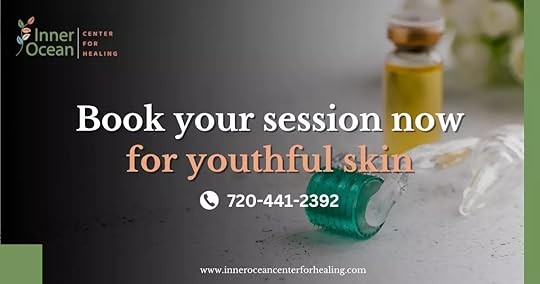
The post Before and After Microneedling: Things You Should Know first appeared on Inner Ocean Center for Healing.
December 6, 2023
Beyond Beauty: Understanding Side Effects of Microneedling
This is when the real magic happens. Production of collagen and elastin are in full swing. Collagen contributes to skin tightening and overall skin rejuvenation. For many, this is the time when the results of the treatment shine. Microneedling benefits reveal healthier skin with improved skin texture.
Beyond Four WeeksFurther improvements continue to manifest for several weeks. The visible signs of the procedure largely disappear. But it is important to note that the healing response depends on the individual’s skin type. The nature of the microneedling treatments is also a factor to consider.
What Are The Common Side Effects of Microneedling?

Microneedling is generally considered a safe procedure for the improved appearance of skin. But like any therapy for skin rejuvenation, it may come with some common side effects. It’s important to note that these side effects are normal after a microneedling session.
Here are the common microneedling side effects:
RednessImmediately after the procedure, it’s common to experience redness in the treated area. This is one of the most common microneedling side effects. Picture a mild sunburn-like effect on your skin tissue. This is a result of increased blood flow and inflammation. Don’t panic because it usually subsides within a day or two.
SwellingSome degree of swelling is common, especially in areas with thinner skin. So, stay calm if your skin feels slightly puffy or swollen. This is a normal reaction due to micro-injuries from sterile needles. Swelling is usually mild and should diminish within a few days.
TendernessLike after any skin trauma, your skin may feel tender or sensitive to the touch. This sensitivity is a natural response to the micro-injuries created during microneedling. Your skin cells work overtime to repair and rejuvenate. It subsides within a few days.
Dryness and PeelingAs the skin heals, it may become dry and start to peel. The peeling is similar to chemical peels that lighten darker skin tones. This is a normal process of shedding dead skin cells and improving skin imperfections. When these are over, you’ll enjoy a new, rejuvenated skin.
BruisingDepending on your skin type and the needle size used, some might experience light bruising. This occurs due to blunt needles penetrating small blood vessels beneath the skin. However, bruising should be minimal and heal on its own.
ItchingAs your skin heals and collagen synthesis occurs, it may cause a temporary itchy sensation. This is a normal part of the healing process. It’s important not to scratch the treated area to prevent irritation or bacterial infections. If itching persists, consult with your dermatologist for appropriate recommendations.
Sun SensitivityMicroneedling can make the skin more sensitive to sunlight. So you need to avoid direct sun exposure. Post-treatment, your skin becomes more susceptible to sun damage.
This heightened sensitivity means extra care is necessary to protect your skin from UV radiation. If you need to go outside, wear a wide-brimmed hat. Make sure to apply sunscreen with a high SPF when going out.
How to Manage Common Side Effects of Microneedling?The above-mentioned are mild side effects of microneedling. Those are normal skin reactions. A bunch of needles create tiny punctures in the deeper layers of your skin. Here are tips to manage those side effects:
Apply A Cold CompressCold temperatures have a natural anti-inflammatory effect on the skin. Skin inflammation is a result of physical trauma to the skin issue. Cold compresses can help attenuate the inflammatory response.
When using a cold compress after microneedling, it’s essential to do so with caution. Apply the cold compress for short durations. Preferably 10-15 minutes at a time. This duration helps you avoid prolonged exposure to cold, which can have adverse effects.
Also, you must avoid direct contact. Place a thin cloth or towel between the cold compress. This will help you prevent frostbite or cold sores.
Dab A Gentle MoisturizerMoisturizers are good topical medications for peeling and dryness. Moisturizing also helps reduce skin imperfections. Nowadays, many moisturizers contain soothing and calming ingredients such as aloe vera and chamomile. These ingredients have anti-inflammatory properties and can help alleviate mild side effects. Look for products labeled as “gentle” or “calming” to ensure they are suitable for microneedling aftercare.
When dabbing on a gentle moisturizer, these are important things to bear in mind. Make sure your hands are clean before applying any product. This will help you avoid introducing bacteria to the treated area.
Also, use a light touch when applying the moisturizer. Avoid rubbing or pulling on the skin, especially in the treated areas. Choose a moisturizer that is specifically formulated for sensitive or post-procedure skin. Prevent using products with harsh ingredients, fragrances, or active ingredients that may irritate the skin.
Hydrate The Skin
Hydrating the skin is necessary after aesthetic treatment. A well-hydrated skin heals the minimal side effects more efficiently. Dry and peeling skin gets uncomfortable and may prolong the recovery process.
To hydrate the skin effectively, use a gentle moisturizer. Choose a mild, hypoallergenic moisturizer that is free of irritants. Look for ingredients like hyaluronic acid, glycerin, or ceramides. These ingredients help maintain the hydration level and improve skin imperfections. Refrain from using glycolic acid as this can cause dryness and irritation.
Put Arnica Gel or CreamArnica gel or cream is a good topical treatment for bruising and inflammation. It is also used for healing facial scars. For the best result, follow the instructions provided on the Arnica product you choose. Typically, you would apply a thin layer to the affected area a few times a day. Avoid applying arnica to broken skin or open wounds.
Use Hypoallergenic LotionThe micro-injuries created during microneedling can make the skin more sensitive. Using a hypoallergenic lotion after microneedling may help reduce itching. This topical product also promotes comfort during the healing process.
Though hypoallergenic lotions won’t cause allergic reactions, it’s good to do a patch test first. Doing so ensures you don’t have any adverse reactions. It also eliminates potential active infection when applied to recently treated skin.
However, only use the lotion that your skincare professional recommends. Use it as well according to the product instructions. Only apply a thin layer to clean, dry skin.
Opt for Sunscreen with SPF 30Choosing a sunscreen with SPF 30 or higher can help reduce sun sensitivity after microneedling. It provides effective protection against both UVA and UVB rays. UVA rays can contribute to premature aging and pigmentation changes. While UVB rays are responsible for sunburn.
What Products Should You Avoid After A Microneedling Session?

After microneedling, it’s crucial to know the products you can use on your skin. Remember that cosmetic products can hinder proper healing and cause potential irritation. Here are many types of products to avoid after a microneedling session:
Harsh Cleansers
Avoid using cleansers with harsh chemicals, strong acids, or abrasive particles. They can cause irritation. Opt for mild, fragrance-free cleansers to gently cleanse your skin.
Exfoliating ProductsSteer clear of exfoliating scrubs or products containing alpha hydroxy acids (AHAs), beta hydroxy acids (BHAs), or retinoids. These can be too harsh on the newly treated skin. They can be too abrasive for freshly treated skin. Using them can cause skin irritation and adverse reactions.
Alcohol-Based ProductsAlcohol is an active ingredient that can dry out and irritate your skin. Avoid toners or astringents with alcohol in the immediate post-microneedling period. It’s best to opt for alcohol-free formulas to avoid additional skin inflammation.
Fragranced SkincareFragrance in skincare can trigger allergic reactions on sensitive skin. Choose unscented products to reduce the risk of irritation. Look for hypoallergenic options for your post-treatment routine.
Makeup with Heavy FormulasAvoid applying heavy or full-coverage makeup immediately after microneedling. Allow your skin to breathe and heal. Thick makeup can clog treated areas which leads to cross-contamination. Heavy makeup can also cause acne breakouts.
Retinol or Retinoid ProductsThese products can be too aggressive for recently treated skin. They can also cause severe side effects. Postpone the use of retinol or retinoid-containing products after a microneedling session. Wait until your skin care professional gives the green light.
Vitamin C Serums with Low pHVitamin C serums are beneficial for collagen induction therapy. But they might cause irritation. They can get too intense immediately after microneedling. Their high potency can cause severe side effects on sensitive skin.
Anti-Aging Formulas with Strong ActivesAvoid using anti-aging formulas with strong actives. Those strong anti-aging ingredients are peptides, growth factors, or powerful antioxidants. They may pose potential risks in the first few days post-microneedling.
Oily and Comedogenic ProductsThese products can exacerbate pore-clogging, causing active acne and acne scars. This is especially harmful for those with darker skin types. Patients with dark skin need to show caution. Though microneedling is a safe procedure, the treatment can lead to hyperpigmentation.
What Are The Potential Risks Associated With Microneedling?There are several benefits of microneedling that beauty enthusiasts can enjoy. However, when the treatment is not done properly, it can cause potential risks. Understanding these risks is crucial for anyone considering this effective procedure.
InfectionThe creation of tiny wounds in the skin can open the door for bacteria. When you don’t follow proper microneedling aftercare, it can lead to infection. It is vital to consult only with professionals. Make sure that they sterile their tools such as needles and microneedling roller devices. They should also have a clean environment before they conduct a microneedling session.
Allergic ReactionsSome individuals might experience allergic reactions to serums or topical treatments used during or after the procedure. Always disclose your medical history and allergic reactions to your practitioner. Being honest ensures your skincare journey is nothing but smooth sailing.
HematomaThose on blood thinners or with bleeding disorders may experience bruising or hematoma. The needle size and depth play a role in this risk. If you’re on blood thinners, have a chat with your practitioner to minimize this risk.
ScarringOne of the advantages of microneedling is its ability to improve the appearance of scars. However, scarring may occur when done incorrectly. Improper technique or overly aggressive treatment can cause new scarring.
Hyperpigmentation or HypopigmentationPeople with dark skin have a higher tendency towards pigmentation disorders. Microneedling can sometimes cause areas of darker (hyperpigmentation) or lighter (hypopigmentation) skin.
Excessive IrritationOverly sensitive skin might react with excessive redness or irritation. It is a must that you use hypoallergenic aftercare products. Following a gentle skincare routine can also mitigate this risk.
Herpes ReactivationFor those with a history of cold sores, microneedling can potentially trigger herpes reactivation. Prophylactic treatment with antiviral medication is advisable.
Unwanted Hair StimulationIn rare cases, stimulating the hair follicles can lead to unwanted hair growth. This occurs particularly in areas like the face.
What Do I Need To Do If I Experience Adverse Reactions?Experiencing adverse reactions, though relatively uncommon, can be concerning. Taking the right steps is crucial if you find yourself in such a situation. These will protect your skin’s health and give you peace of mind.
Firstly, it’s essential to recognize what constitutes an adverse reaction. Common side effects like mild redness or swelling are typical post-microneedling. They usually subside within a few days.
However, if you notice more severe symptoms, those are your green light to take action. Severe symptoms include intense itching, prolonged swelling, and signs of infection like pus. Watch out for severe redness or pain, or unusual skin changes like dark spots or atrophic scars as well.
In the event of such reactions, the immediate step is to cease applying any products that could exacerbate the condition. Avoid collagen-stimulating treatments, acne treatments, and products containing salicylic acid or other strong exfoliants. These can irritate the already sensitive outer layers of your skin.
Next, contact the healthcare professional who performed your microneedling treatment. Provide them with an objective assessment of your symptoms. Explain in detail about what you’re experiencing. If possible, send them photos. This information will help them determine whether your reaction is within the expected range of side effects of microneedling or if it’s something more serious.
If you cannot reach the professional who treated you, it’s advisable to seek medical attention immediately. Certain conditions, like infections, need prompt treatment to prevent complications.
When to Seek Professional Help?

Knowing when to seek professional help is crucial. Your decision to contact a healthcare professional saves you money and from further stress. Here’s your guide that will help you navigate your microneedling journey.
One primary reason to seek help is if you experience signs of infection. Those can be increased redness, warmth, and perhaps pus around the treated area. If you notice any of these symptoms, it’s time to contact a healthcare provider.
Another scenario warranting professional advice is if you develop severe or prolonged skin reactions post-microneedling. Experiencing mild acne treatment-like reactions are normal. But extensive skin irritation and increased dark spots that persist are not. If the intensity does not subside after a couple of days, immediately consult your doctor.
If you have pre-existing skin conditions, consulting a professional post-treatment is advisable. Those skin conditions include atrophic acne scars and varicella scars. Immediately seek medical attention if you are prone to keloid scars as well.
Microneedling involves creating controlled micro-injuries to the skin. The treatment can sometimes exacerbate certain conditions.
They can also advise whether additional treatments, like radiofrequency treatment or autologous platelet-rich plasma therapy, are safe for you.
Allergic reactions are another critical area. If you experience symptoms like hives, itching, or swelling seek medical attention. Look if they spread beyond the treated area.
Other symptoms like difficulty in breathing and fever also need professional assistance. These could be a reaction to products used during the procedure. Sometimes, these can be a response to the treatment itself.
Lastly, if you notice no improvement or worsening of your skin concerns after several sessions, it might be time to reassess your treatment plan. Microneedling can offer significant benefits for collagen growth and improve the appearance of scars. But it is not a one-size-fits-all solution. Sometimes, an alternative approach or additional treatments are necessary.
Wrapping UpWhile microneedling is a generally safe and effective procedure, being attentive to your skin’s response is essential. Always consult with your healthcare provider or a dermatologist if you experience unusual side effects. Reach out to your doctor who performs your microneedling session if your skin isn’t healing as expected. Your journey to skin rejuvenation should be as safe as it is effective. Remember, when it comes to microneedling and skincare, seeking timely professional advice can make all the difference.
At Inner Ocean Center for Healing, we accompany our clients in their microneedling journey. Our licensed and experienced practitioners conduct safe and effective treatment. We always provide detailed consultation before starting a microneedling session. Through this, we ensure that our clients understand what microneedling is, from its benefits to its side effects.
Are you ready to harness the power of microneedling? Contact us and let us help you bid farewell to skin concerns.
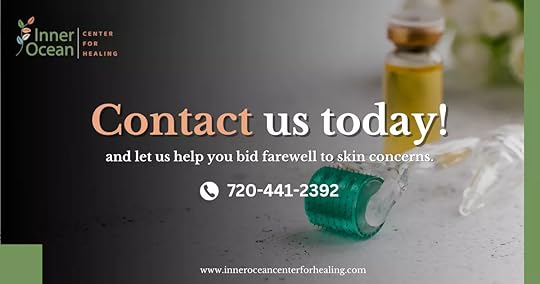
The post Beyond Beauty: Understanding Side Effects of Microneedling first appeared on Inner Ocean Center for Healing.



